1lumen selects and reviews products personally. We may earn affiliate commissions through our links, which help support our testing.
Acebeam Pokelit AA Gray review
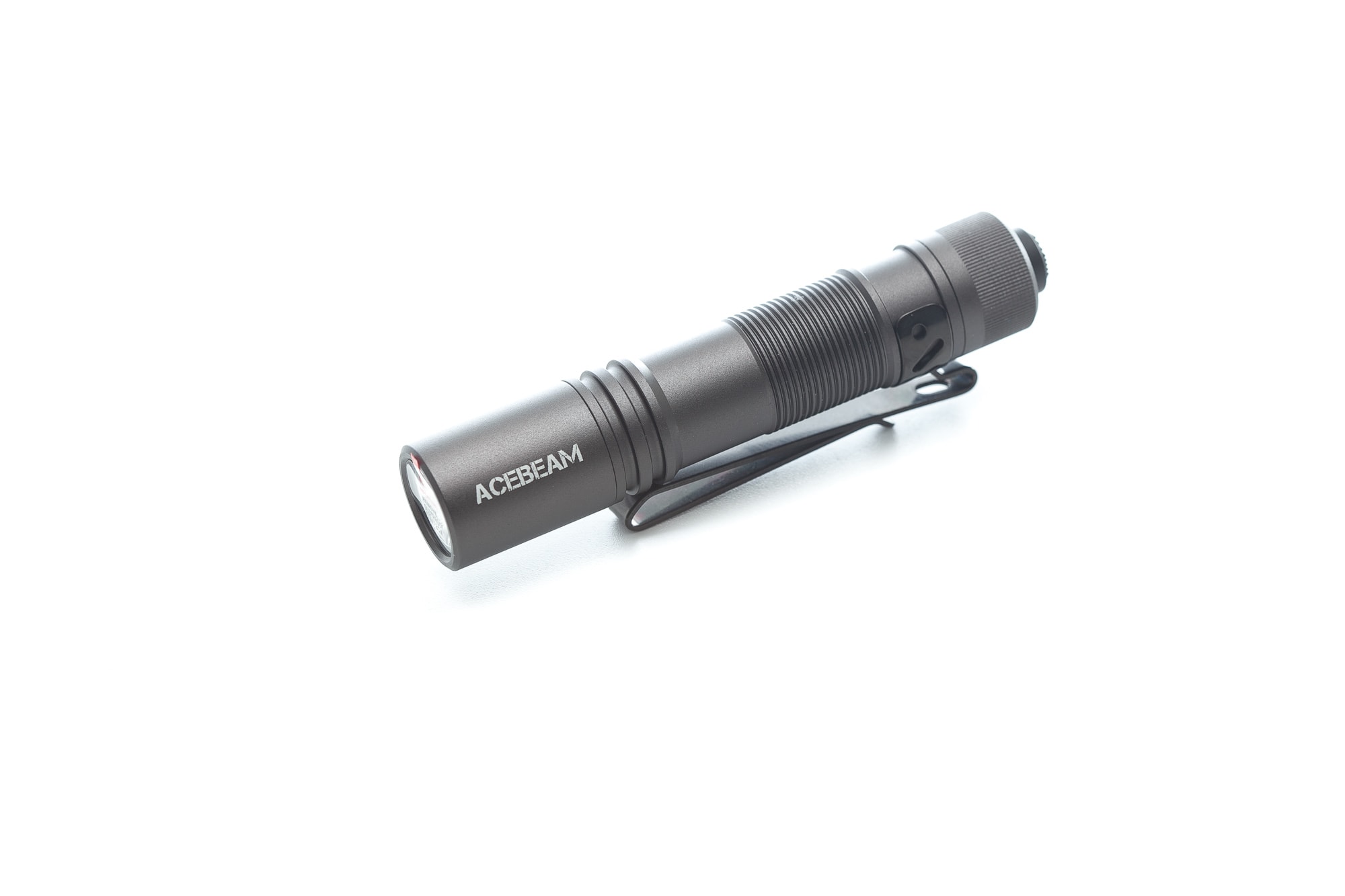
Acebeam Pokelit AA Gray specifications
| Brand/model | Acebeam Pokelit AA Gray |
|---|---|
| Flashlight category | EDC |
| LED | ? |
| Max. output | 1,000 lumens |
| Max. beam distance | 105 meters |
| Max. beam intensity | 2,756 cd |
| Battery config. | 1*AA / 1*14500 |
| Onboard charging | N/A (battery has USB-C charging) |
| Modes | 3 |
| Blinkies | N/A |
| Waterproof | IP68 |
| Review date | April 2023 |
Introduction:
Acebeam has been around for several years, and keep adding new and interesting flashlights. They still only focus on lighting products (flashlights, headlamps etc). The one I am reviewing now is their latest AA flashlight, the Pokelit AA Gray.
Don’t mistake this for the standard Pokelit AA with ‘only’ 550 lumens! Even though it looks and seems to be the same, the maximum output is not.
The light runs of available AA batteries, both primaries as rechargeable. But on top of that, Acebeam includes a 14500 lithium-ion rechargeable battery for max performance. And yes, there is a huge difference between the lithium battery and AA batteries.
Before you use it, make sure you remove the battery insulator!
Package quality.
For the price, you get a pretty decent box with the following inside;
- The flashlight: Acebeam Pokelit AA Gray
- Pocket clip (pre-attached)
- 14500 lithium-ion battery
- USB-C charging cable for the 14500 battery
- Lanyard
- Spare O-rings
- Manual
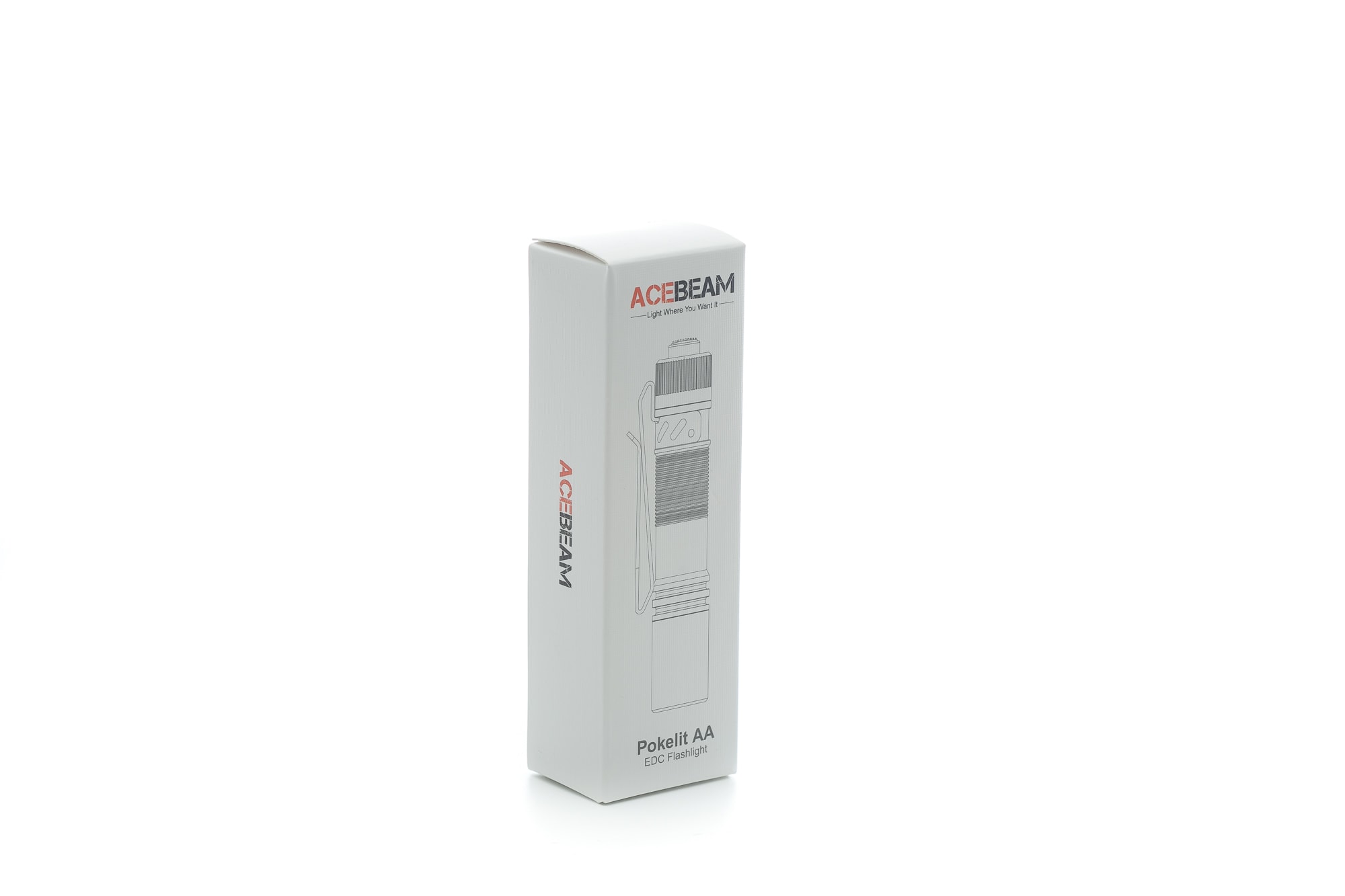
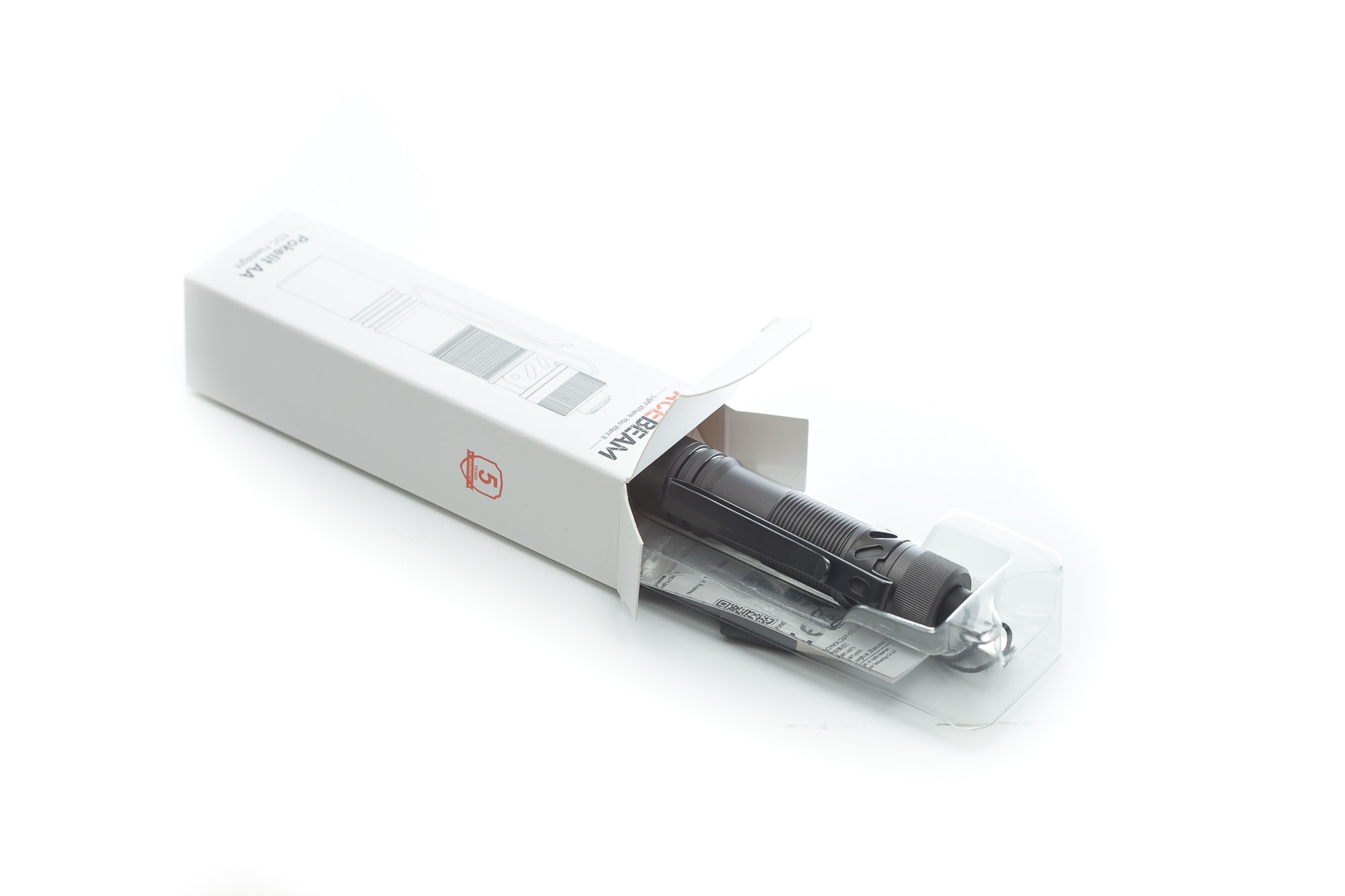
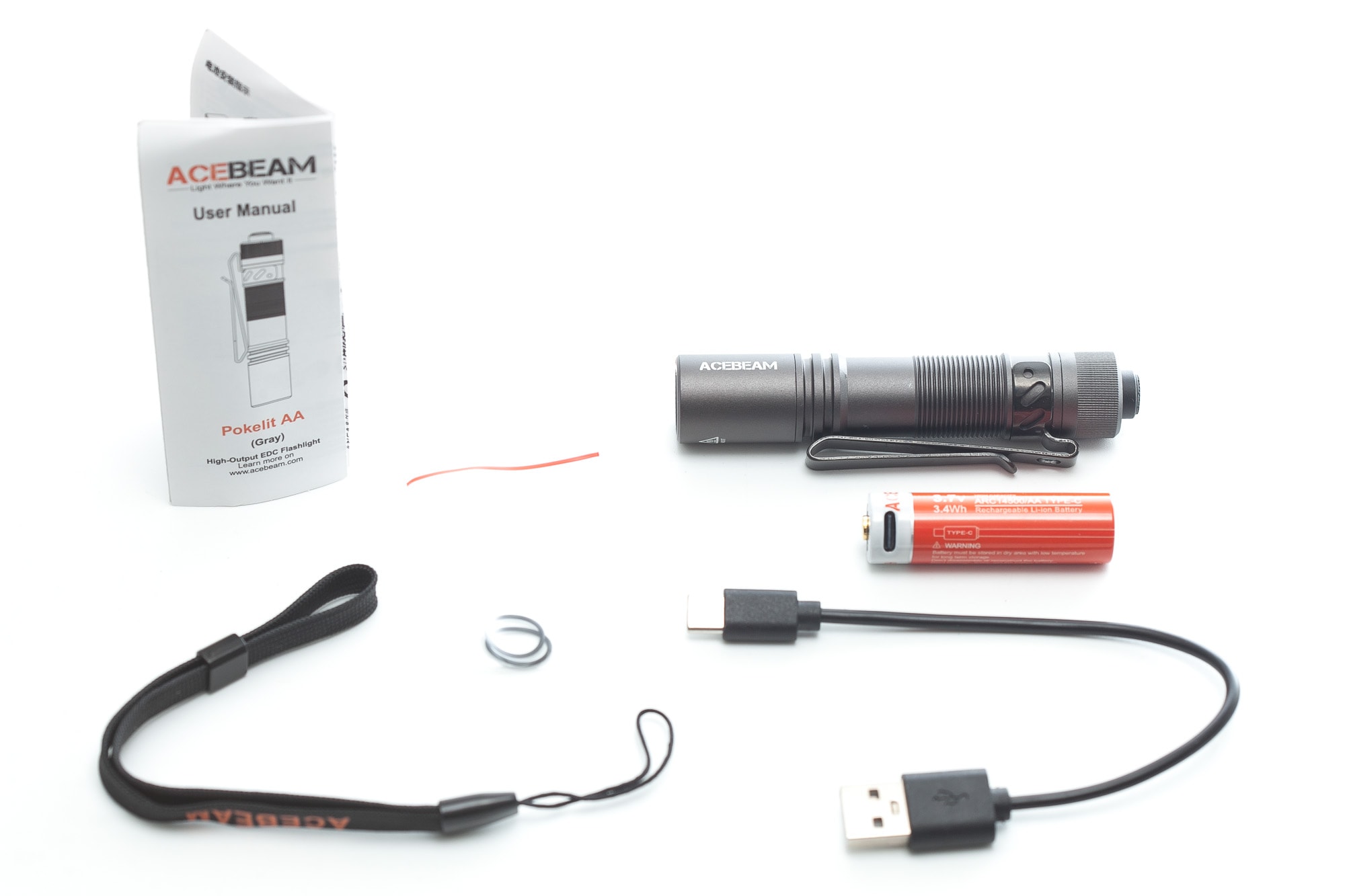
Flashlight in use
Just like its bigger brother, the Pokelit 2AA, the switch is protruding, so you can’t make it tail stand.
It is a forward clicky switch, so the light turns on before you hear the click.
You can use the light with an overhand and underhand grip. And since it has only 1 switch, you either have to use 2 hands for activation and mode switching or re-position your hand, so you can put your thumb onto the switch.
Acebeam included (and pre-attached) a 2-way pocket clip for deep-pocket carry as well as giving you the possibility to attach it to your baseball cap. The same pocket clips works like a anti-roll feature on a slightly included surface.
There is also a lanyard included in the package, so that’s another way to use it.
With all these options for carry, there are lots of activities you can use this for. This would include Every Day Carry, but it’s also an interesting light for camping, walking the dog etc. You just need to keep in mind to charge the battery regularly, because battery life is relatively short.
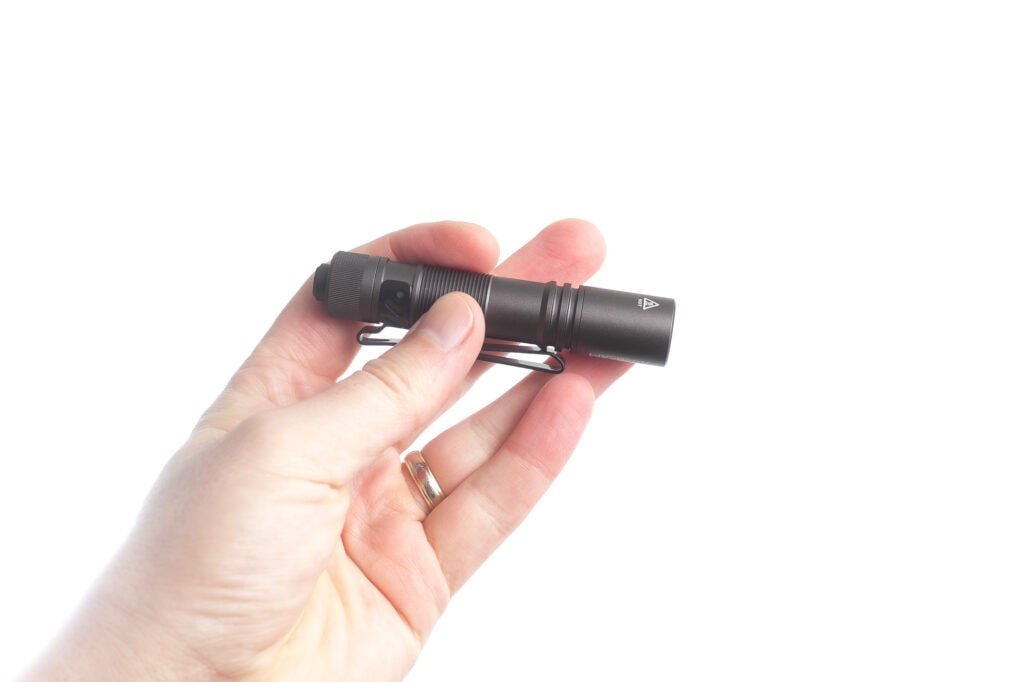

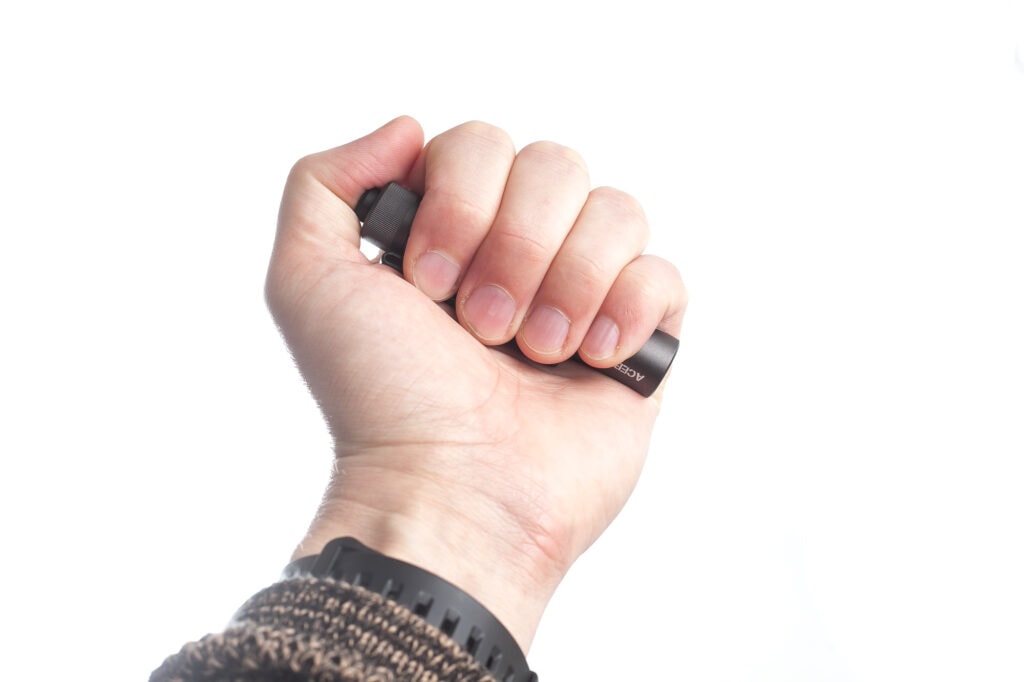
Build Quality, and Warranty
Acebeam makes really nice and top-notch flashlights. And I can’t really complain about the Acebeam Pokelit here either.
The only part that is removable, is the head. That’s also the place where you insert the battery.
The threads are bare, so even if the head is not fully tightened, you can still turn the light on/off, and change modes. And since it’s using a mechanical switch, you don’t need to worry about the parasitic drain, as you can’t mechanically unlock it, by unscrewing the head. That was a long sentence.
Unlike the normal Pokelit AA, this one is only available in Gray, hence the naming.
The warranty according to their website:
Warranty terms:
1. If the customer experiences any problems caused by manufacturing defects in normal use with an Acebeam product within 15 days of purchase, the dealer will replace that product.
2. If an Acebeam flashlight fails during normal use and any problem covered under warranty occurs within a period of 5 YEARS (60 months) of purchase, the dealer is responsible for warranty service.
3. Acebeam flashlights enjoy a limited lifetime warranty – after 60 months the dealer will attempt to repair the flashlight for the cost of spare parts and shipping (i.e. no charge for labour).
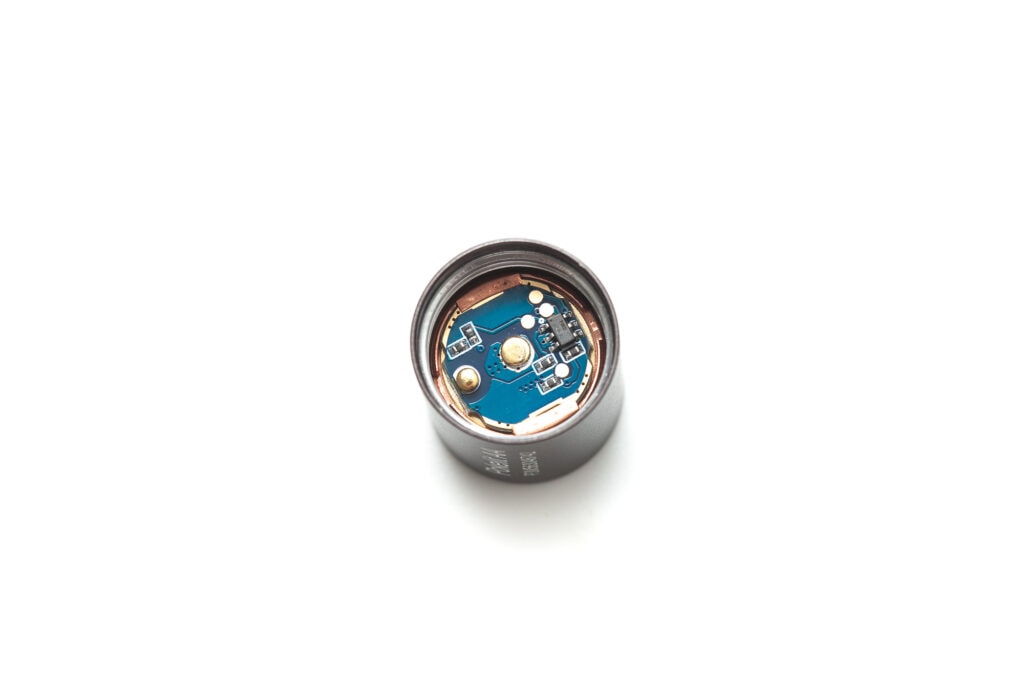
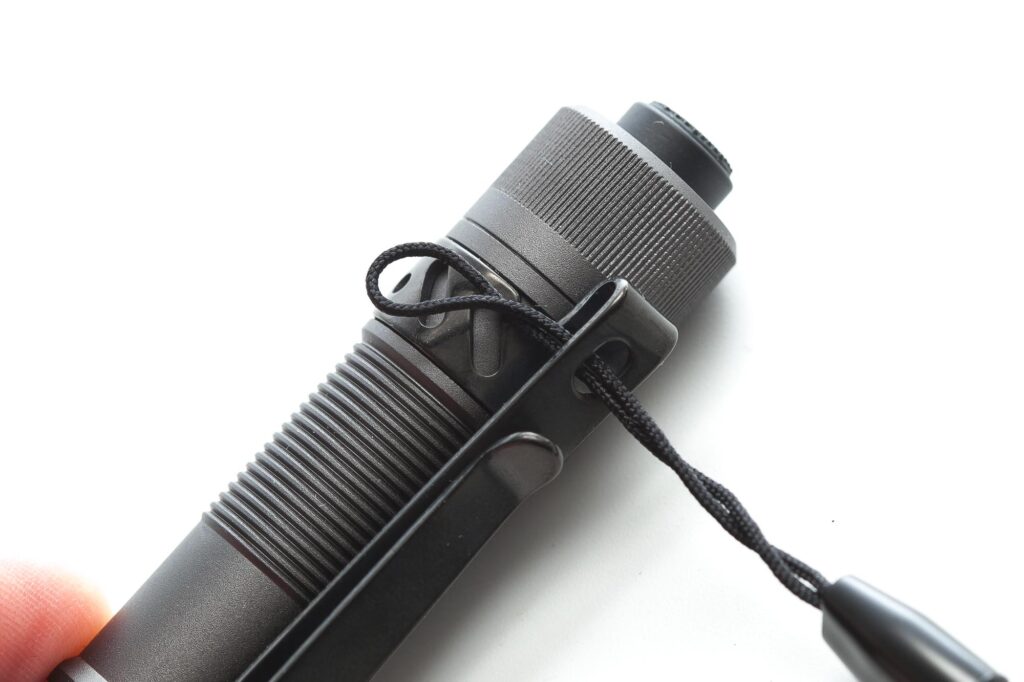
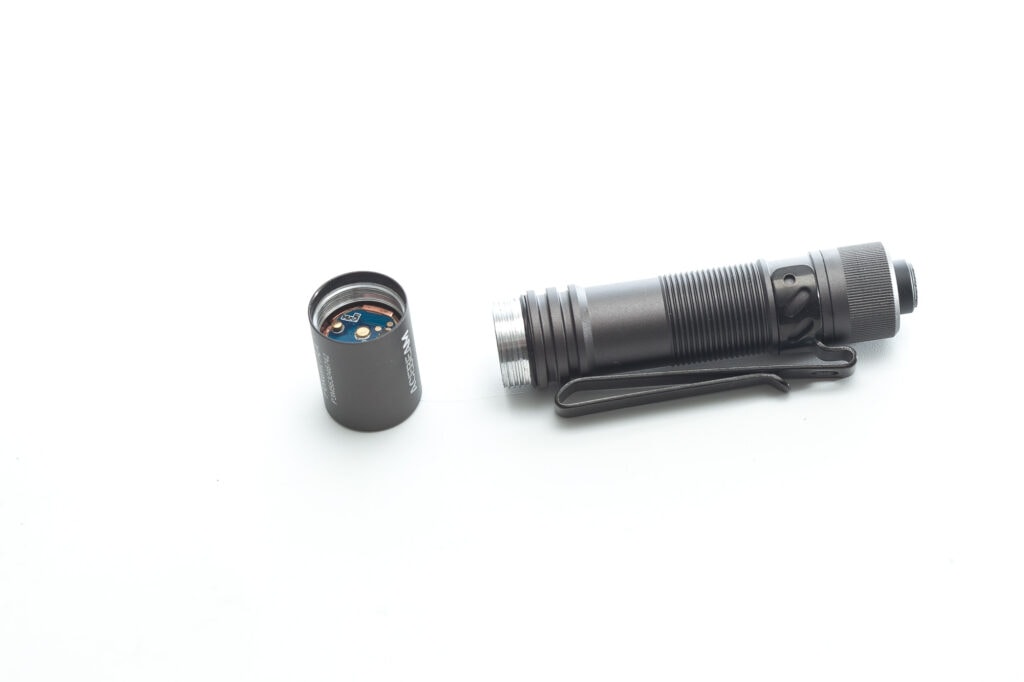
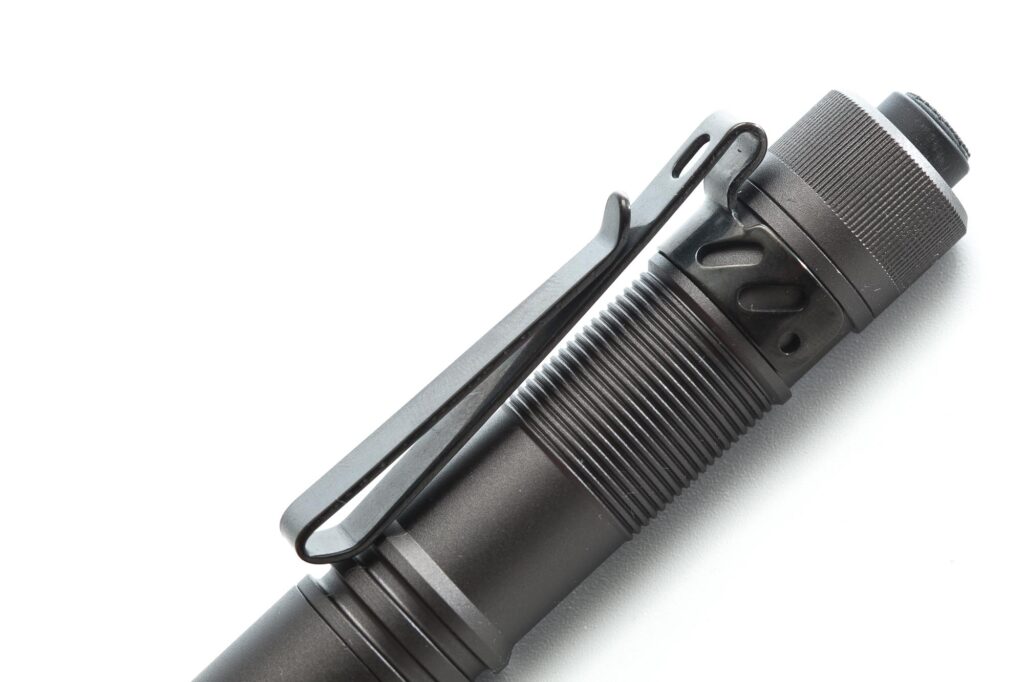
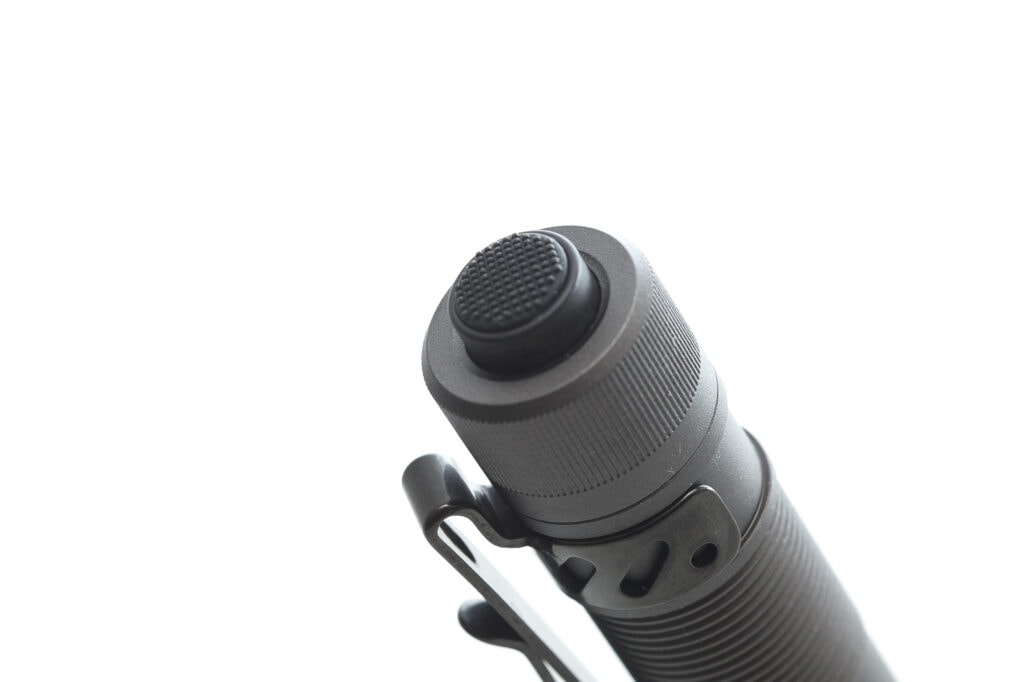
LED, Lens, Bezel, Beam, and Reflector
Acebeam knows that people in the flashlight community like to know what particular LED has been used. And when they do, they proudly share that information on their website, as well as on the packaging and in the manual. But for this one, they don’t. It’s simply called a High Density LED with 6500K.
Unfortunately, I can’t really tell what brand or model it is using. It looks pretty generic so to say, without any physically unique characteristics. All I can say is that it looks indeed a bit cool.
But why bother you with things I think, let’s see what the tools say about it.
For this test, I used the following spectrometer: Asensetek Lighting Passport Pro Standard
And this is what it measured in High mode:
- CCT: 5555K
- CRI Ra 70
- CRI: 60
- Duv: 0.0103
Med mode:
- CCT: 5570K
- CRI Ra 69
- CRI: 57
- Duv: 0.0128
Low mode (The was too far away to register succesfully… so I won’t share them here)
The beam is on the cooler side, but not as cool as advertised. It has a very clear and clean round hotspot with the edges pronounced, so you can see a clear difference between the hotspot and the spill. Also, it’s importan to note that the hotspot is big and evenly lit.
It lacks a normal bezel because the bezel and head are one piece.
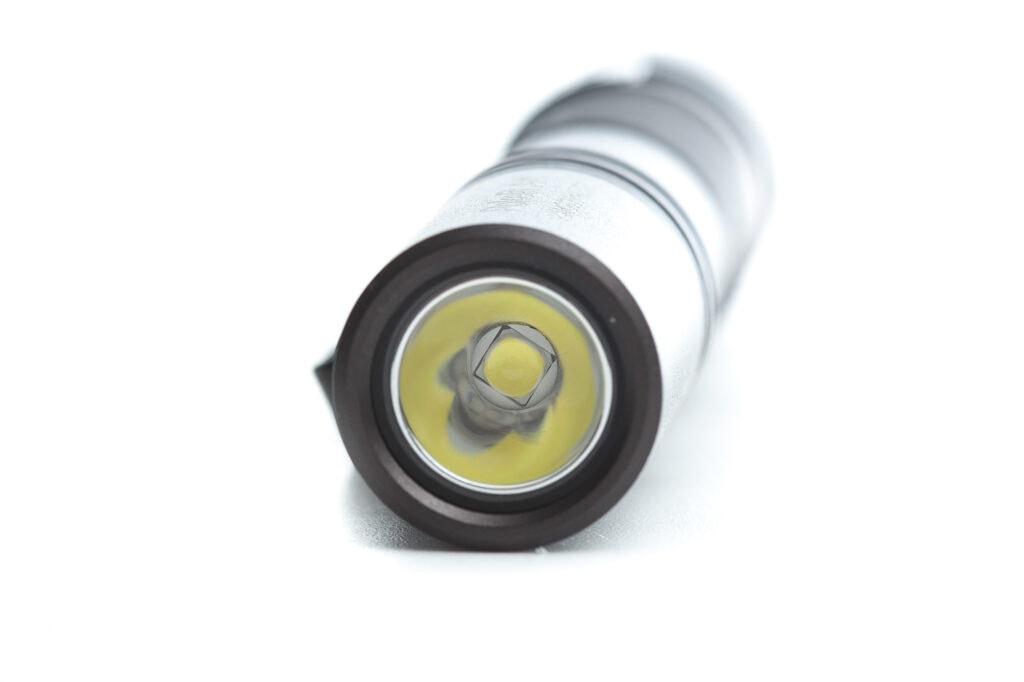
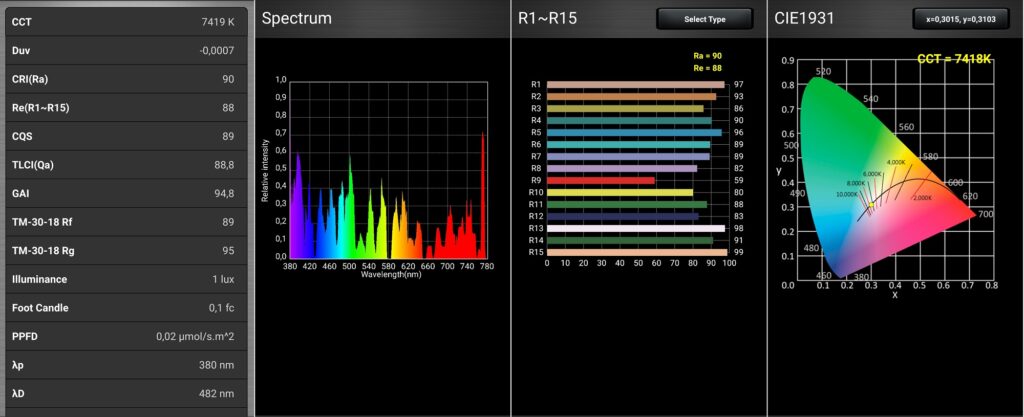
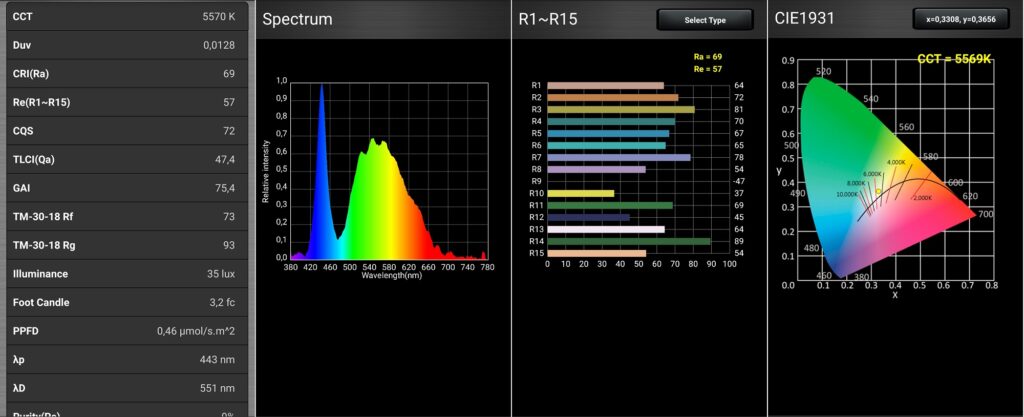
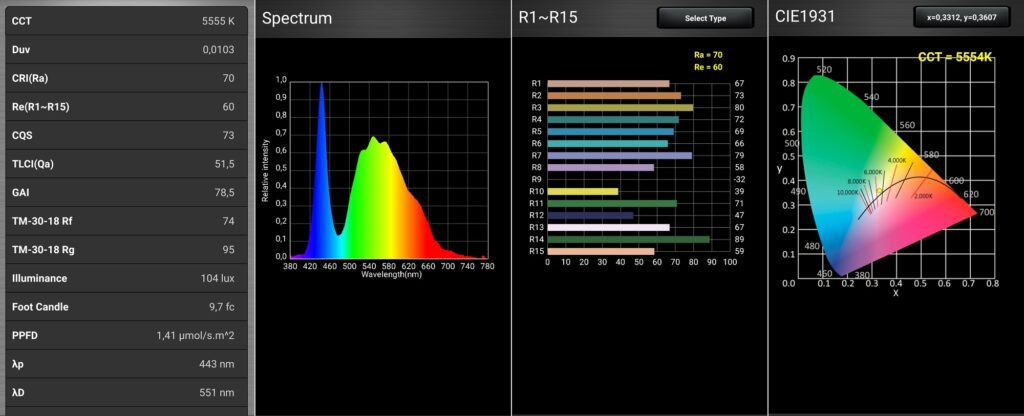
Dimensions and size comparison
Dimensions:
| Pokelit AA Gray | Millimeters | Inches |
|---|---|---|
| Length | 95 mm | 3.7 “ |
| Head diameter | 18 mm | 0.7 “ |
| Body diameter (narrowest point) | 16 mm | 0.6 “ |
Dimensions are rounded to the nearest millimeter, and to the nearest tenth of an Inch.
Weight:
| Pokelit AA Gray | Weight in grams | Weight in Oz. |
|---|---|---|
| Without battery: | 37 g | 1.3 oz. |
| With 14500 battery | 58 g | 2 oz. |
| With AA eneloop | 63 g | 2.2 oz |
Weight is rounded to the nearest gram, and to the nearest tenth of an Oz.
Acebeam Pokelit AA Gray flashlight comparison
Size compared to other AA flashlights and some of the best EDC flashlights
From left to right: Acebeam Pokelit AA, Manker E05, Olight i5R Eos, Acebeam Pokelit AA copper, Reylight Pineapple v4, Convoy T2, Fenix E12 v2, Lumintop Tool AA 2.0, Lumintop EDC05, Stainless steel light.
Group 2: Compared to the Acebeam Pokelit 2AA
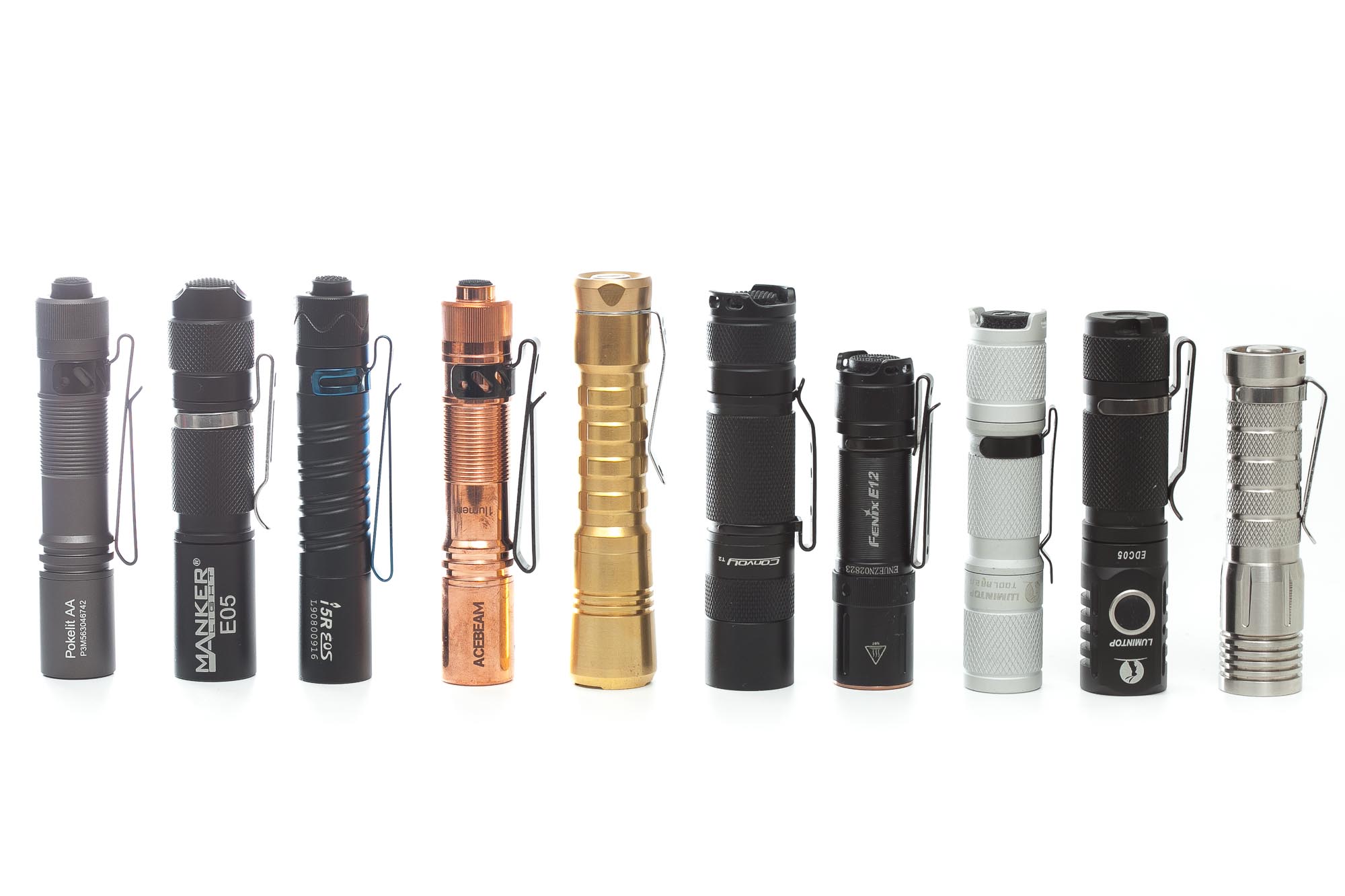
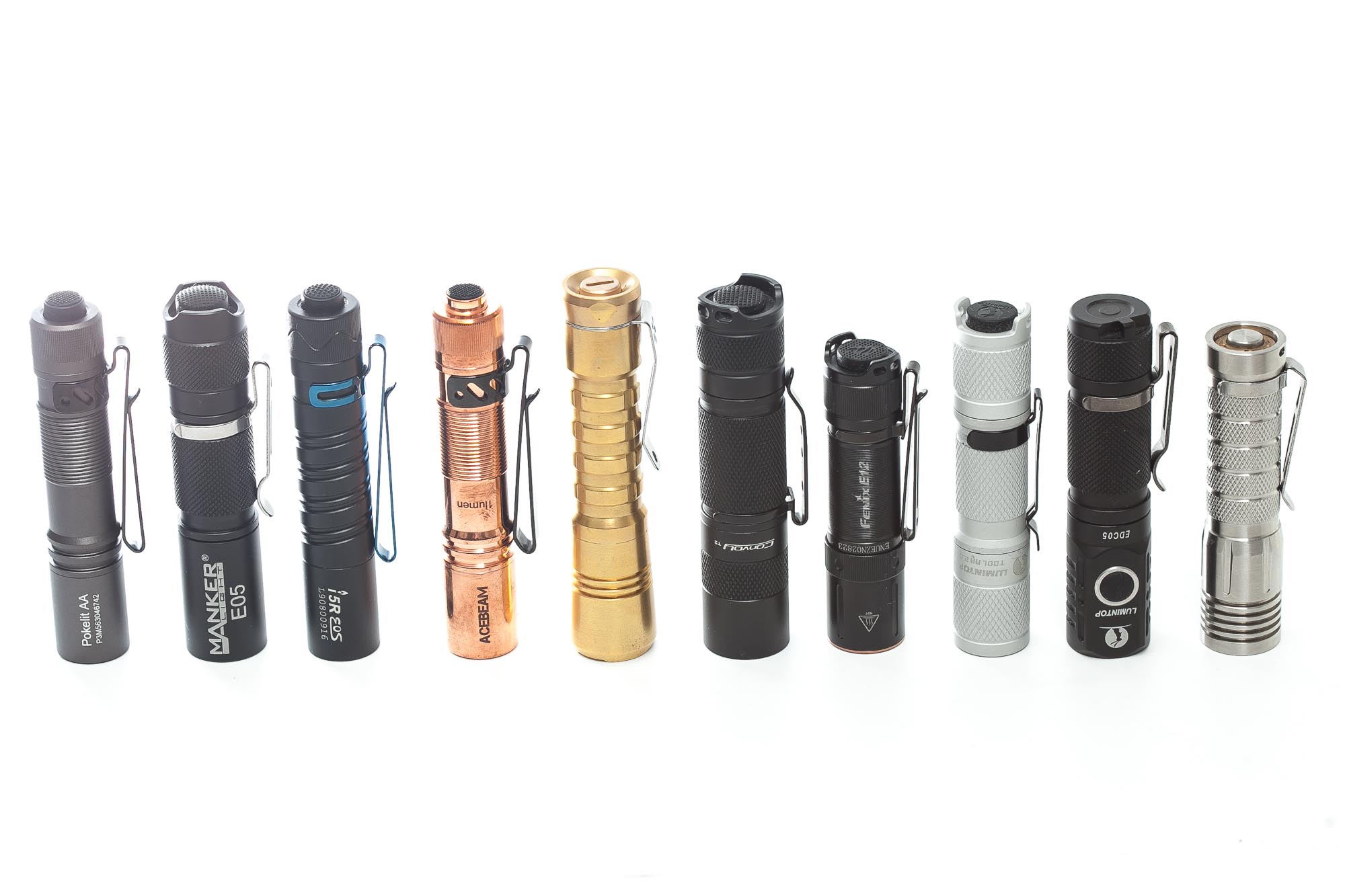
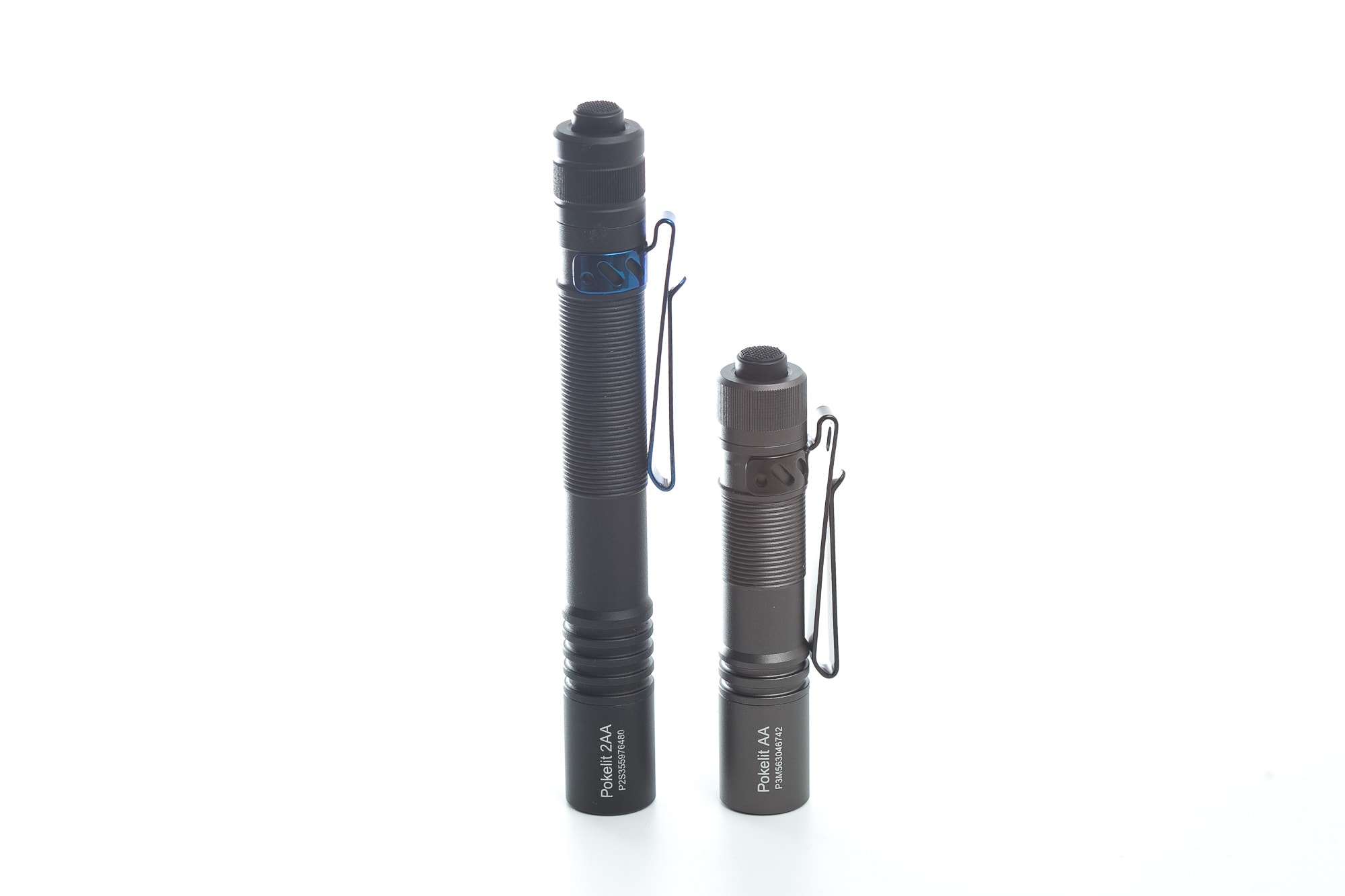
Driver & User Interface:
The Pokelit AA gray uses some sort of buck-boost driver because the LED is 3V, but lithium-ion batteries go up to 4.2V, while an AA battery goes as low as 0.9V. In order to power the LED, the driver has to increase and decrease the voltage, depending on the taype of battery.
The switch is a forward-clicky switch, so it has a momentary-on feature. It also means you can’t change modes while the switch/light is activated.
The first mode is very dim on AA/NiMH batteries, so I would call it Moon instead of Low.
Available main modes:
- Low, Med, High (with lithium-ion battery)
- Moon, Med, High (with AA Alkaline / NiMH batteries)
Available special modes (blinkies):
- N/A
From OFF:
- Half-press: momentary on
- Half-pressing: switching from low to high
- Single-click:turns on selected mode
From ON:
- Half-press: nothing
- Single-click: turns off
Shortcuts:
- None
Mode memory:
- Yes, unlike the bigger Pokelite 2 AA, which doesn’t have mode memory.
Blinky modes menu:
- None
Low battery warning:
- The output reduces, but there is no other warning
Lock-out mode:
- It’s a mechanical switch
PWM:
- Not visible by eye
Firmware / UI Conclusion:
The UI is pretty standard, and that’s a good thing IMHO.
Acebeam Pokelit AA Gray Batteries & Charging
One thing I like about this light is the number of batteries you an use.
By default, Acebeam included a 14500 lithium-ion battery, named the Olight ARC14500/AA Type-C with a total capacity of 920mAh. It has a USB-C charging port, and charges at around 0.5A. So I measured 2 hours and 13 minutes charging time.
The driver has a mechanical protection against reverse polarity, with a small copper pin. So when you insert the battery the wrong way, it would not make contact with the driver.
Besides a lithium-ion battery, you can also use standard and rechargeable AA batteries. I just advise against using Alkaline primaries because they can leak and destroy your flashlight.
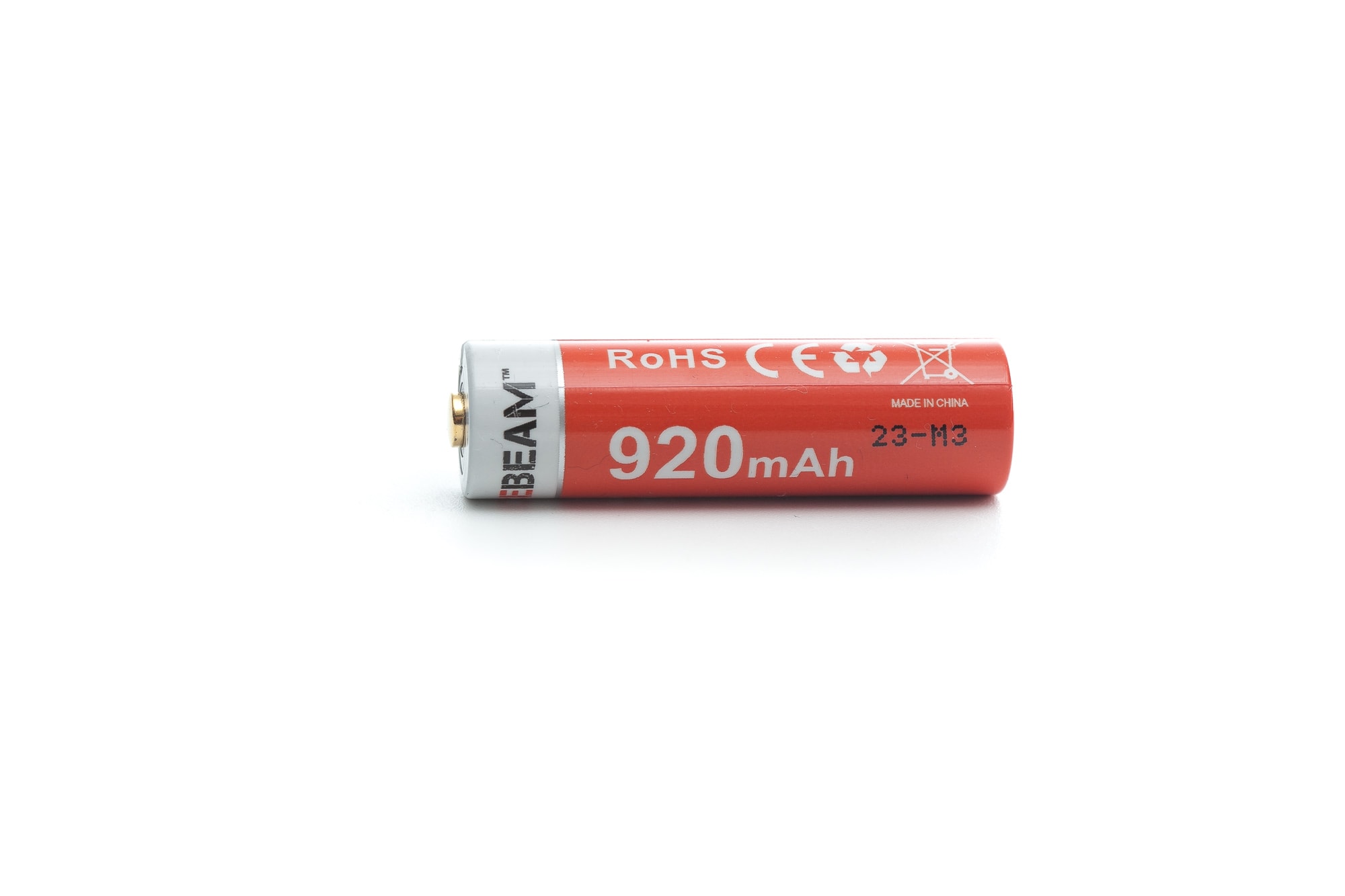
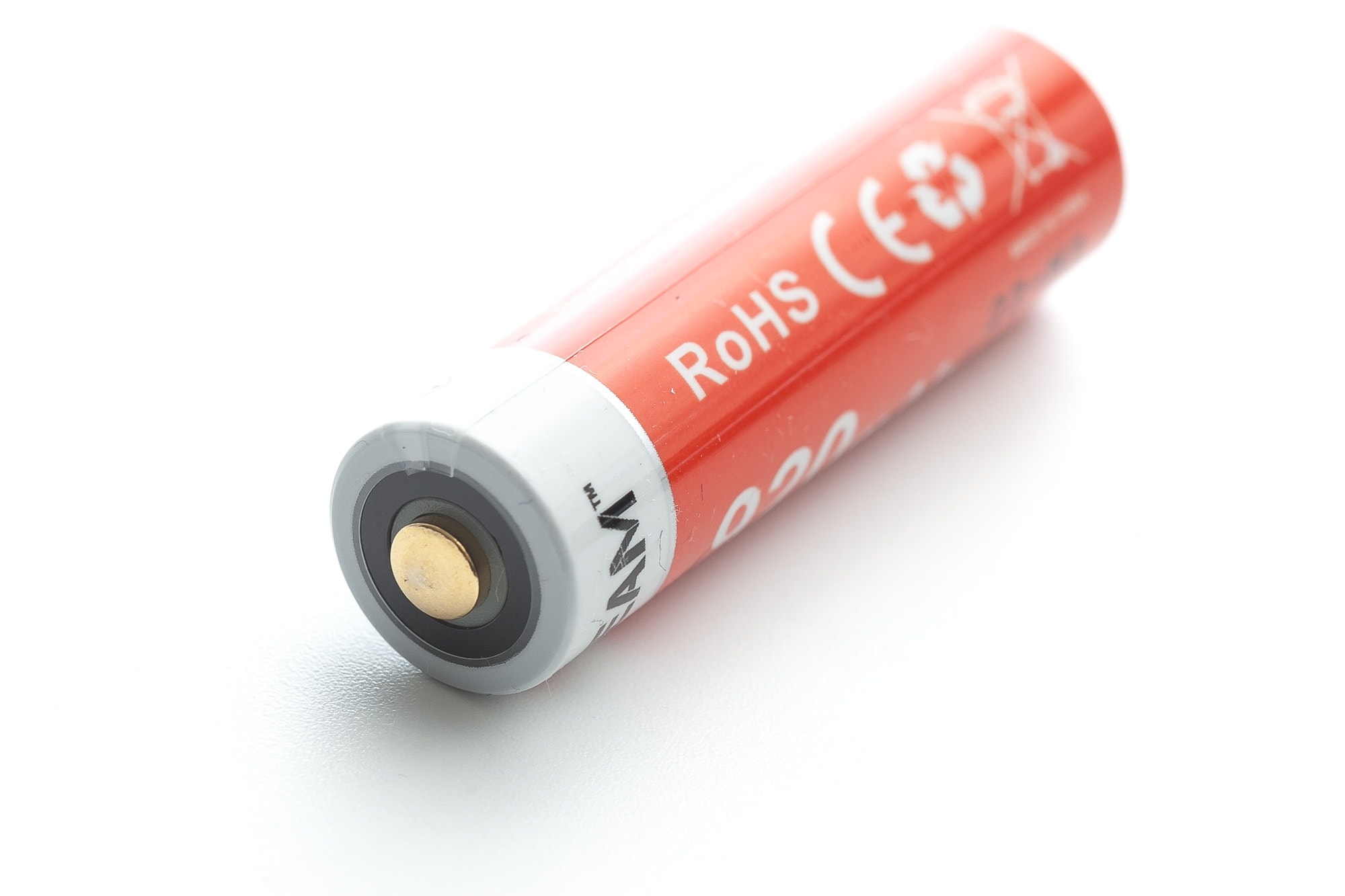
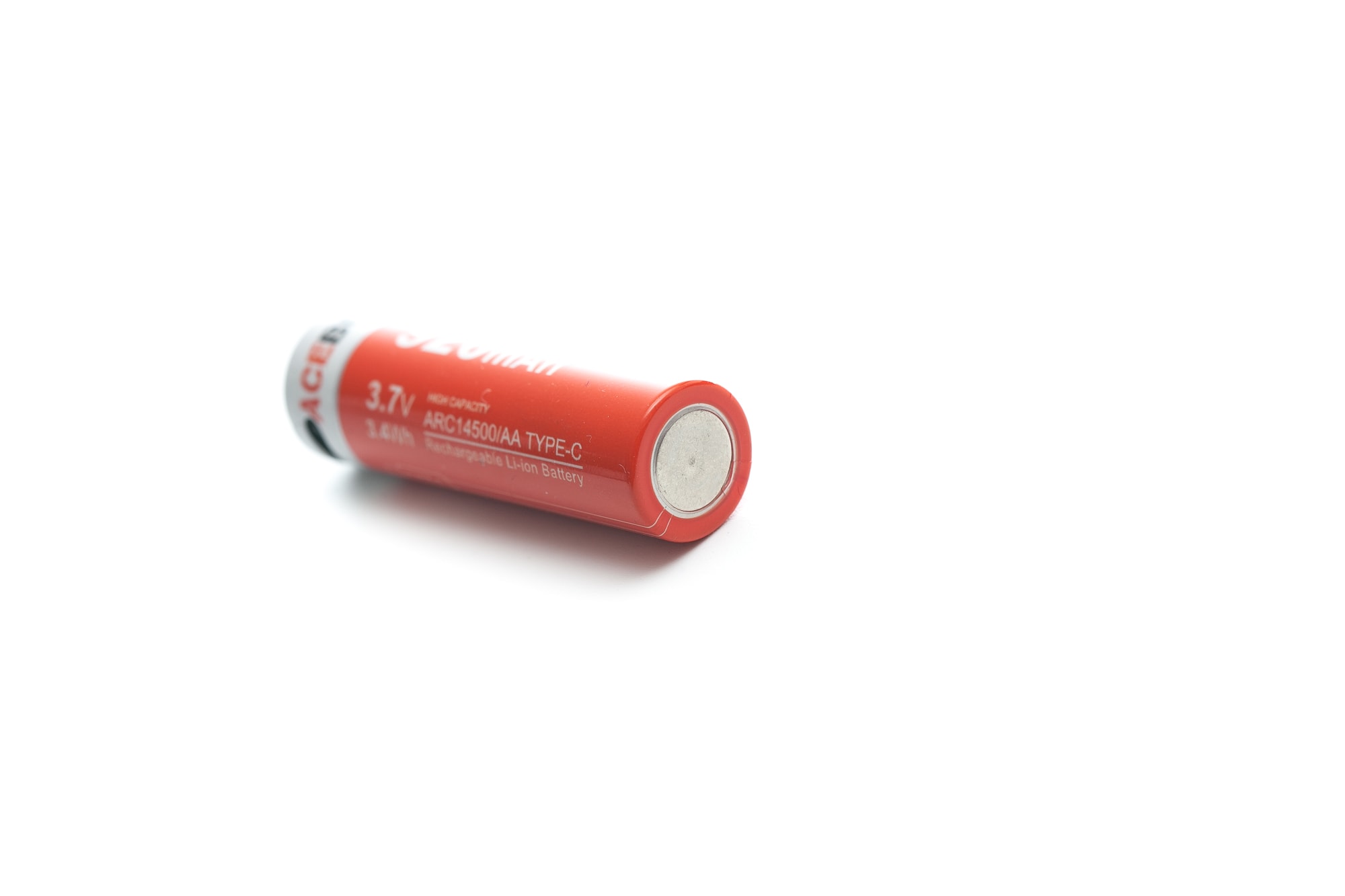
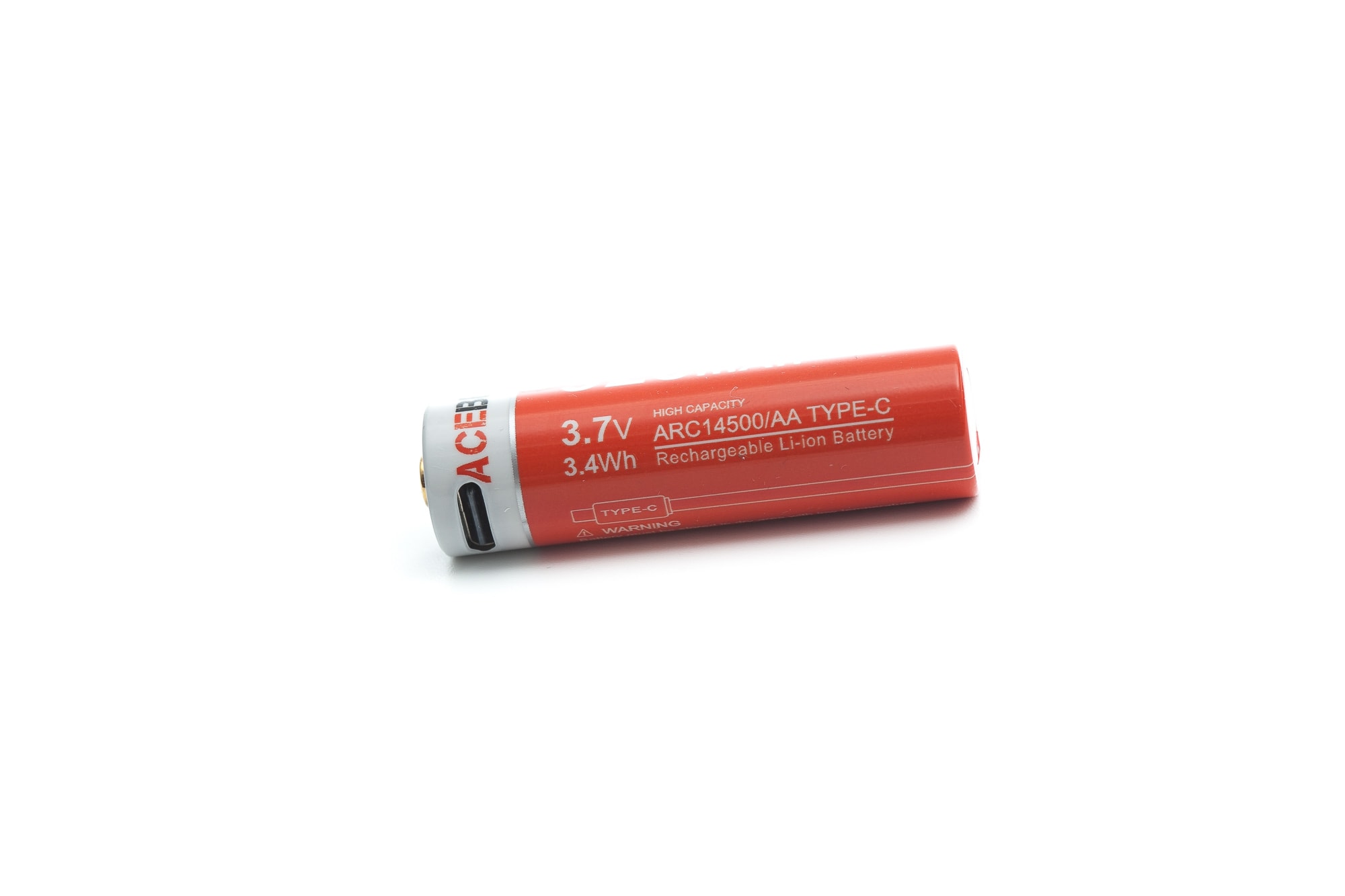
Performance test
This is the gear I used for testing:
| Gear | Purpose | Link to buy |
|---|---|---|
| Hagner E4-X | Measuring beam intensity (throw) | Inquire at Hagner.se |
| Extech SDL400 | Lumens and logging runtimes | Amazon.com, Amazon.co.uk, |
| Leica Disto D2 | Distance for throw measurements | Amazon.com, Amazon.co.uk, |
| Asensetek Lighting Passport Pro Standard | Spectrometer for LED measurements | – |
Lumen measurements:
The output measurements in this review are based on my homemade integrating spheres, each equipped with an Extech SDL400 Lux Meter. For consistency and accuracy, a calibration light (Convoy S2+ with 249lm and a Convoy S2+ with 261lm) is measured prior to each set of lumen measurements.
For high-output lights, one of the lux meters uses an ND camera filter to prevent the lux meter to max out. This is either the Kenko PRO1D ND16 up till about 80,000 lumens or Gobe ND32 for anything above.
All of my readings were taken from a fully-charged 14500 battery, and Eneloop AA battery.
The measurements were taken manually at turn on and 30 seconds. The 10-minute numbers are taken from the runtime graph.
With 14500 lithium-ion battery I measured the following:
| Mode | Specified | turn on | 30 sec | 10 min |
|---|---|---|---|---|
| Low | 5 lm | 7 | 7 | – |
| Med | 330 lm | 292 | 283 | 270 |
| High | 1000 lm | 885 lm | 805 lm | 483 |
| 3.6V High* | – | 599lm | 646 lm | – |
The last measurement was at around 3.6V-3.65V, to see how High mode would perform. It’s interesting to note that I saw a strange bump in output during this 30 seconds test.
Here are the measurements with Panasonic Eneloop AA 2,000mAh battery:
| Mode | Specs | At turn on | 30 sec |
|---|---|---|---|
| Low | ? | 1 | 1 |
| Med | ? | 116 | 116 |
| High | ? | 345 lm | 321 lm |
I used rounded numbers for the outputs.
Parasitic drain:
- Nothing to measure
Acebeam Pokelit AA Gray battery life and runtime graphs
The runtime test was done with the 50cm home made integrating sphere, combined with the Extech SDL400 data logging Lux Meter.
First up is a graph with 14500 vs AA batteries.
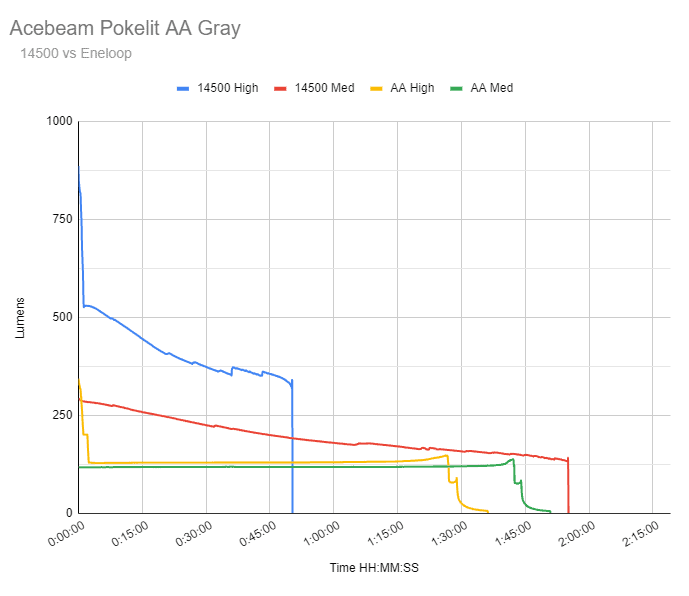
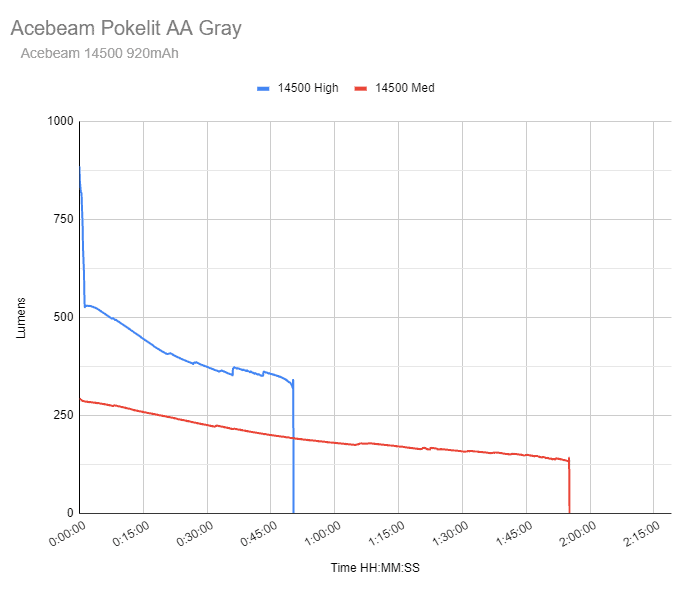
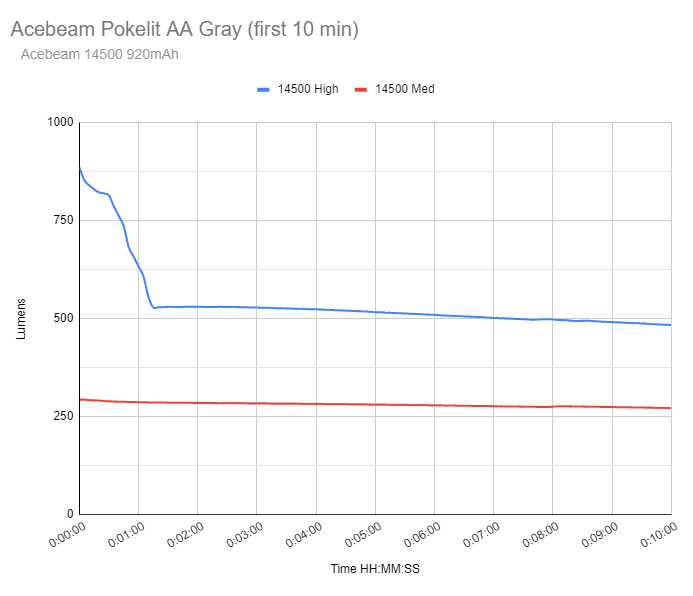
| Mode | Specified runtime | Measured runtime (ANSI FL1) | Time till shut off |
|---|---|---|---|
| 14500 lithium: Low | 58h | – | – |
| 14500 lithium: Med | 1h 50min | 1h 55min | 1h 55min |
| 14500 lithium: High | 49min | 50min | 50min |
| Eneloop AA: Low | ? | – | – |
| Eneloop AA: Med | ? | 1h 46min | 1h 50min |
| Eneloop AA: High | ? | 1h 29min | 1h 36min |
I didn’t test Low because of the long specified runtimes.
After the Eneloop test, I measured 0.8V.
About ANSI FL1 standards: The runtime is measured until the light drops to 10% of its initial output (30 seconds after turning it on). This does not mean that the flashlight is not usable anymore. The last column shows how long the light actually works till it shuts off. If there is a + symbol, it means that the test was stopped at that particular point, but the light was actually still running. This happens on certain occasions, with certain drivers, firmware, or batteries.
Acebeam Pokelit AA Gray peak beam intensity- and beam distance measurements
Measurements were taken indoors at 5 meters with a Hagner E4-X Lux Meter.
| Mode | Specified | Measured Cd | Meters | Yards |
|---|---|---|---|---|
| Low | – | 25 | 10 m | 11 yd |
| Med | – | 850 | 58 m | 64 yd |
| High | 2,756cd | 2,500 cd | 100 m | 109 yd |
Unfortunately, it didn’t reach the specced beam intensity, but it’s very close, so you wouldn’t even be able to tell the difference.
Extra info: Peak beam distance according to ANSI FL1 standards: The calculated value of distance in meters at which the flashlight produces a light intensity of 0.25 lux. (0.25 lux is about the brightness of a full moon shining on an object).
AA Flashlight performance comparison chart
Below is an interactive runtime graph of several AA flashlights I tested. These are measured with AA Eneloop batteries. Even though some of the lights work with 14500 batteries, the numbers are solely for Eneloops.
Some of the following measurements were taken directly from the runtime graph below, instead of the manual measurements, simply because I only have old data for some. So they can differ from the measurements in the review.
| Flashlight (and Link) | At turn on | 30 sec | 10 minutes |
|---|---|---|---|
| Acebeam Pokelit AA Gray | 345 | 321 | 128 |
| Acebeam Tac AA | 322 | 306 | 101 |
| Convoy T2 | 210 | 215 | 233 |
| Cyansky P10 | 335 | 212 | 133 |
| Fenix E12 v2 | 152 | 151 | 148 |
| Lumintop EDC AA | 214 | 170 | 169 |
| Lumintop Tool AA 2.0 | 345 | 248 | 212 |
| Manker E05 | 140 | 140 | 140 |
| Olight i5R EOS | 167 | 158 | 126 |
| Olight i5R EOS HiCRI | 169 | 158 | 126 |
| Reylight Pineapple v4 | 247 | 203 | 177 |
| Zebralight SC53C N | 261 | 235 | 181 |
Here’s a closeup graph of the first 10 minutes
Beamshots
For the following beamshots, I used a Canon EOS 5D Mk2 with a 50mm lens. Manual settings: ISO1600, 1/30sec, F4, 5000K
The wall is about 5-6 meters, and the fence is about 4 meters away. I also took some pictures at 65meters distance, but they were not very helpful, only with 14500 battery.
The following flashlights are compared:
- Acebeam Pokelit AA Gray
- Olight i5R High Cri (2.4V)
- Olight i5T Plus (2AA)
- Olight i3T EOS (AAA)
- Olight i3T Plus (2AAA)
Low was too dim to see in the picture.

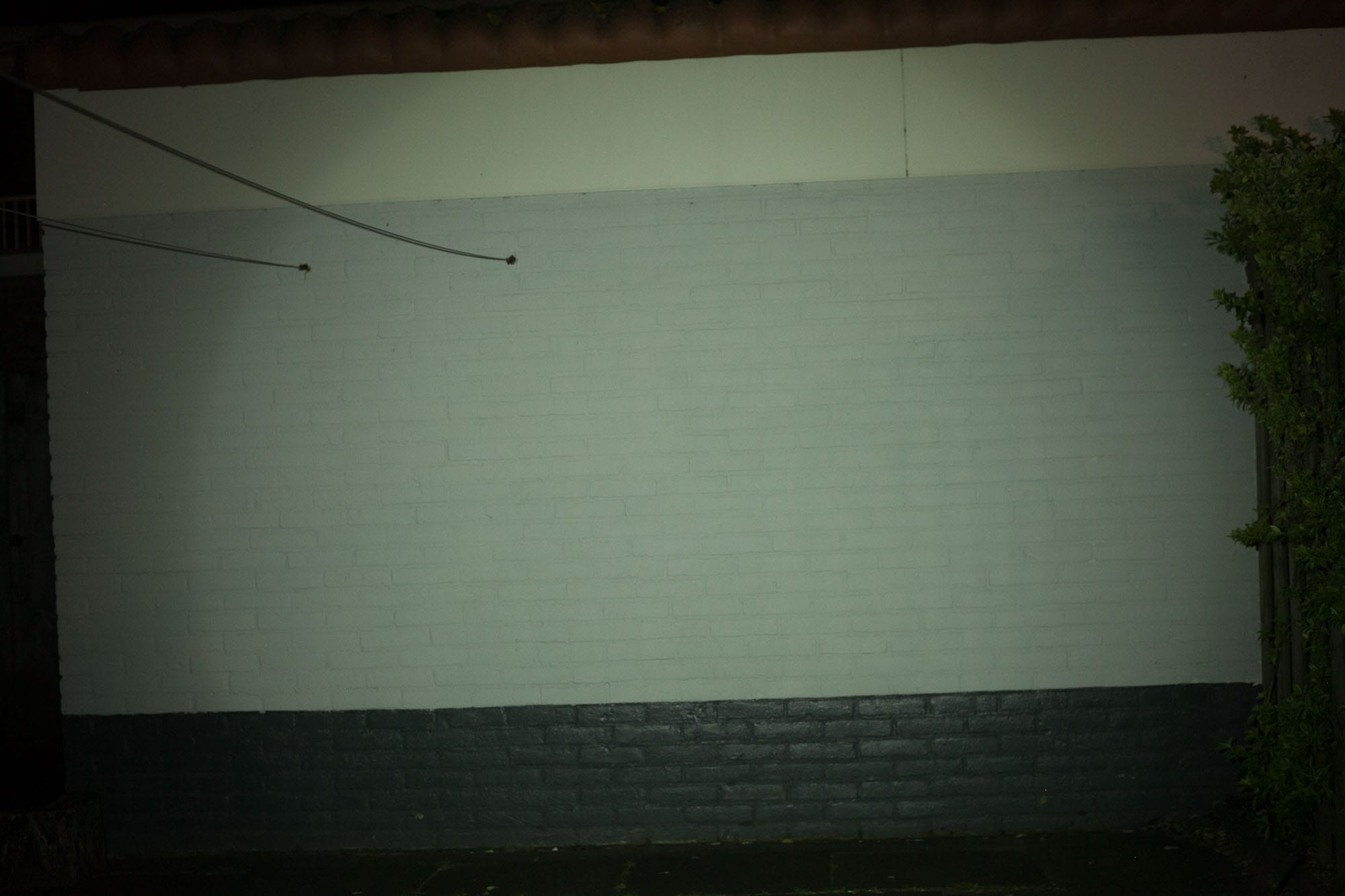
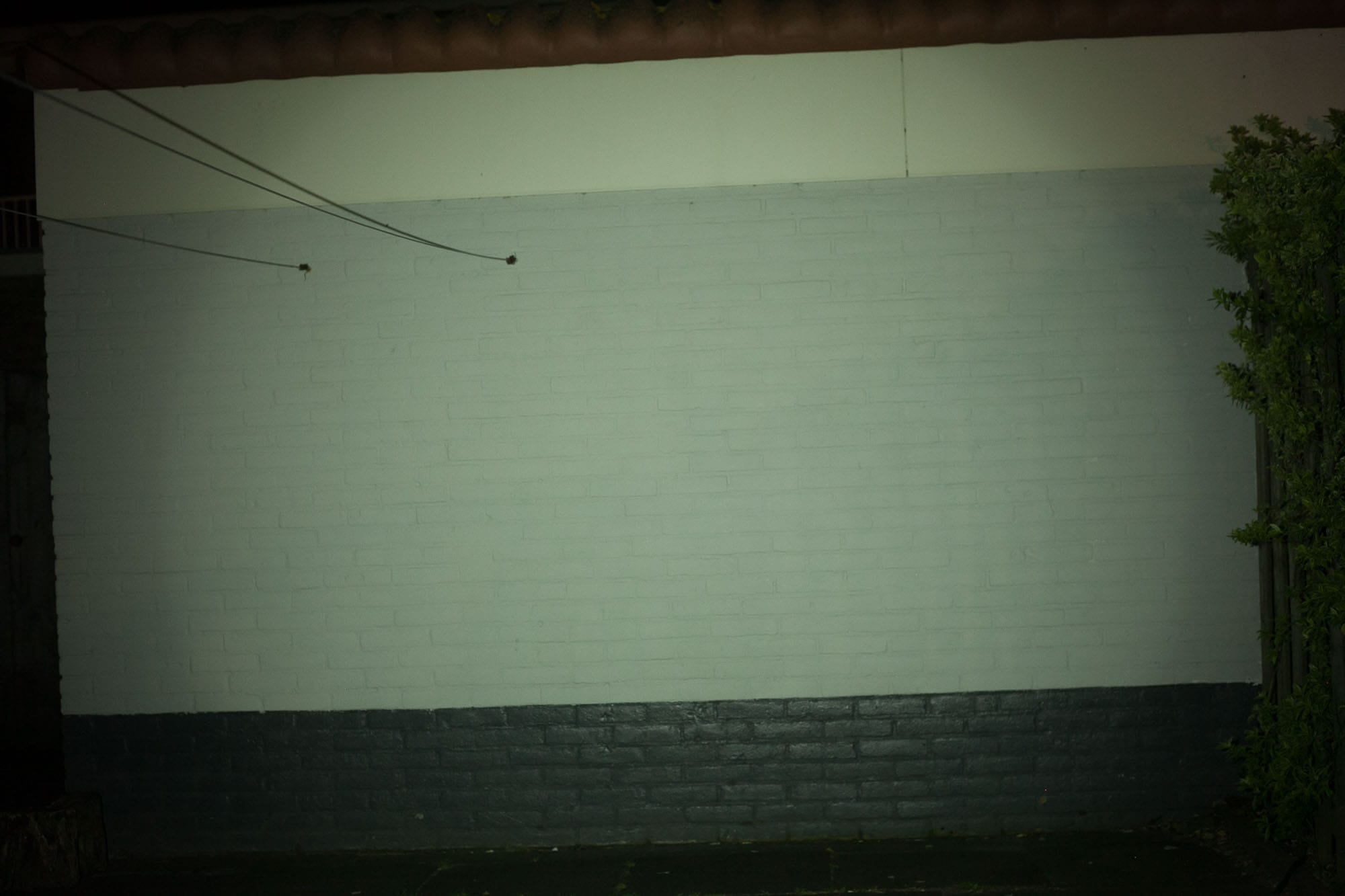
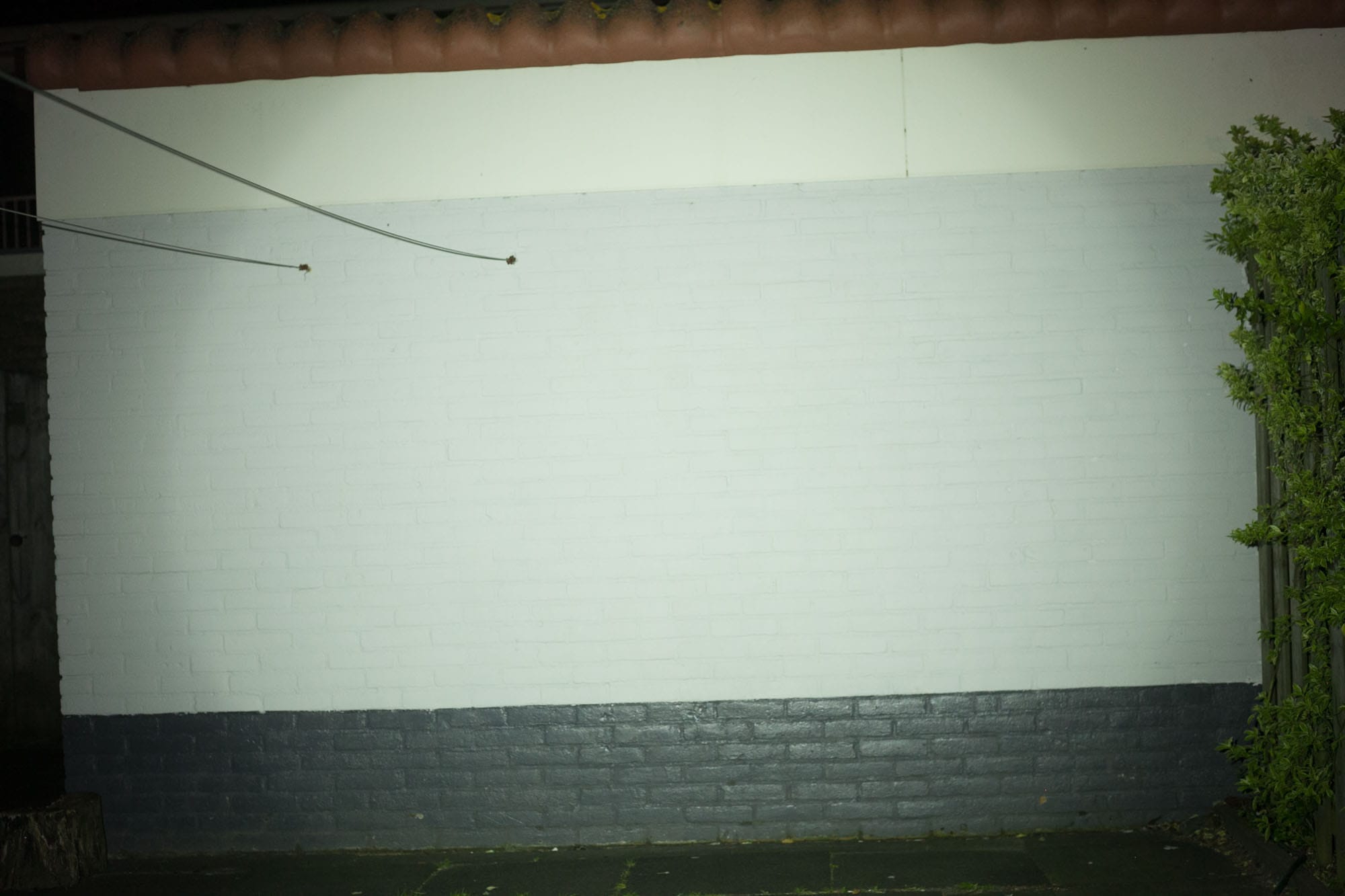

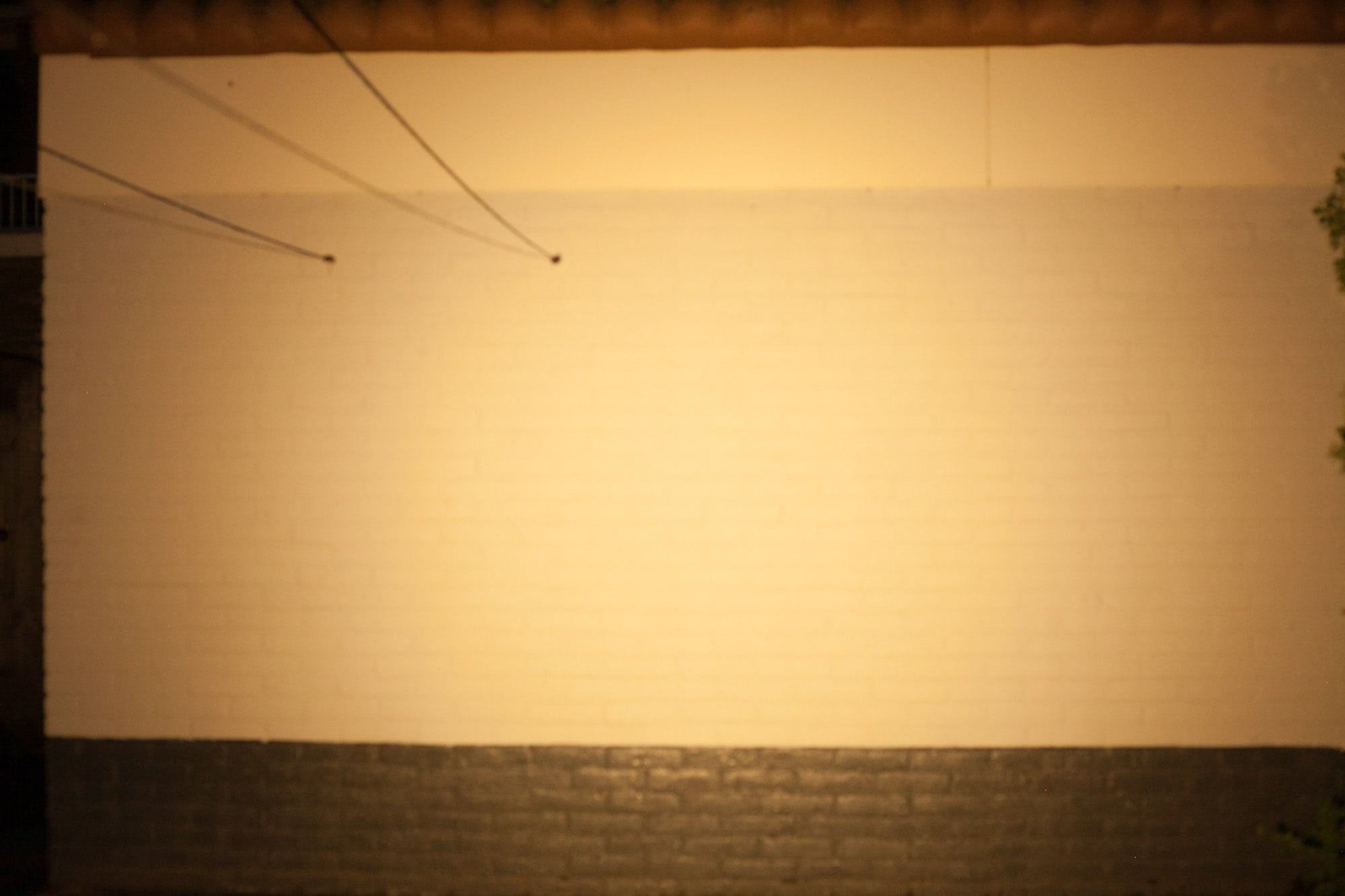

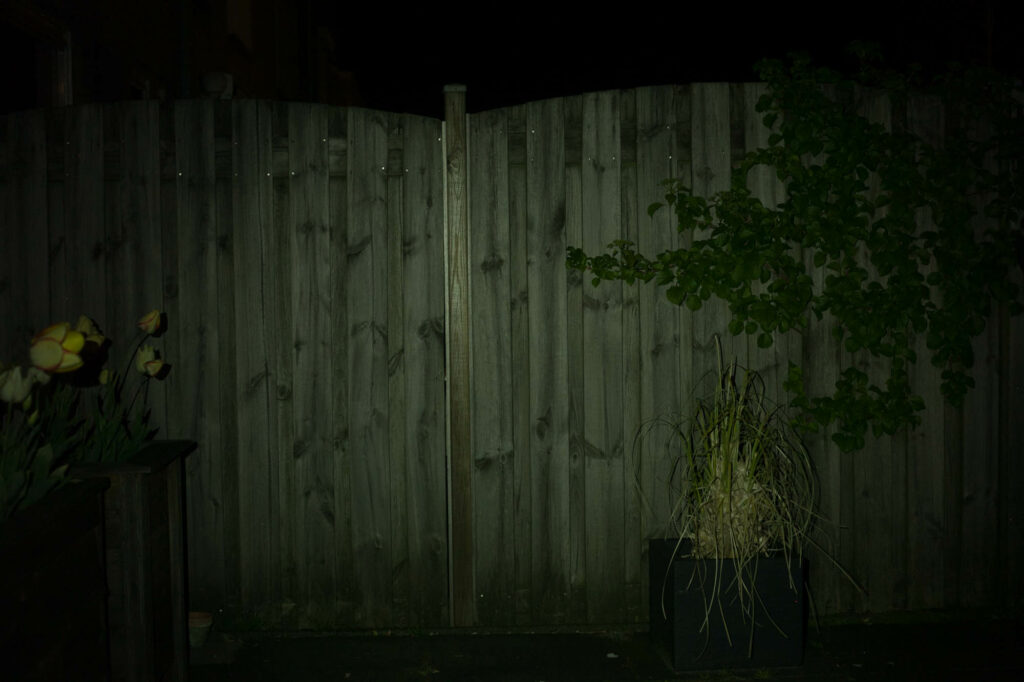
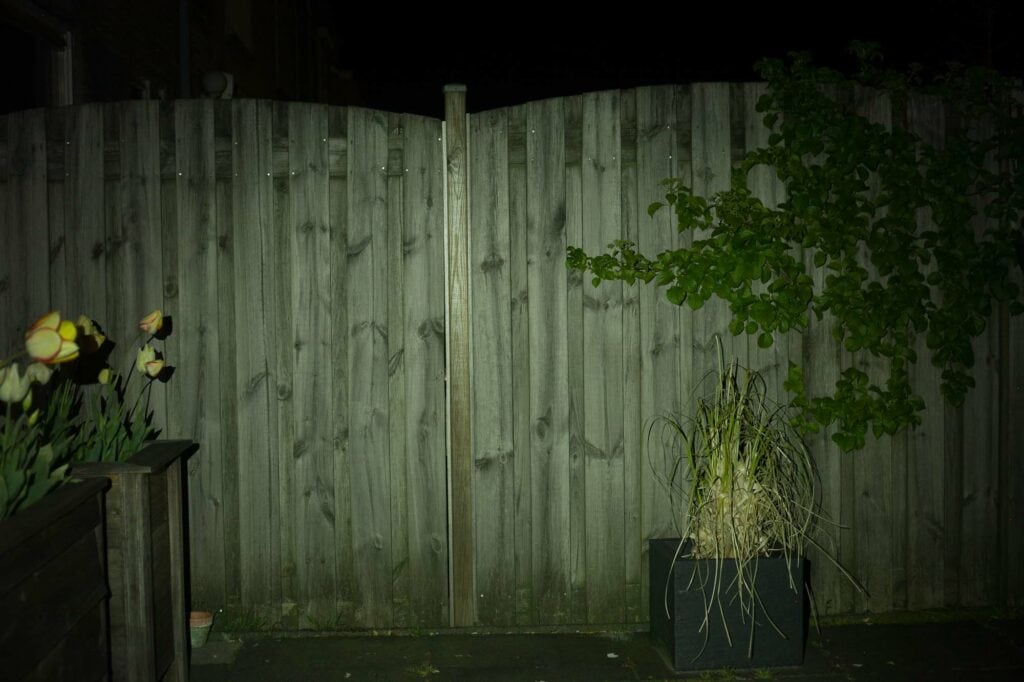
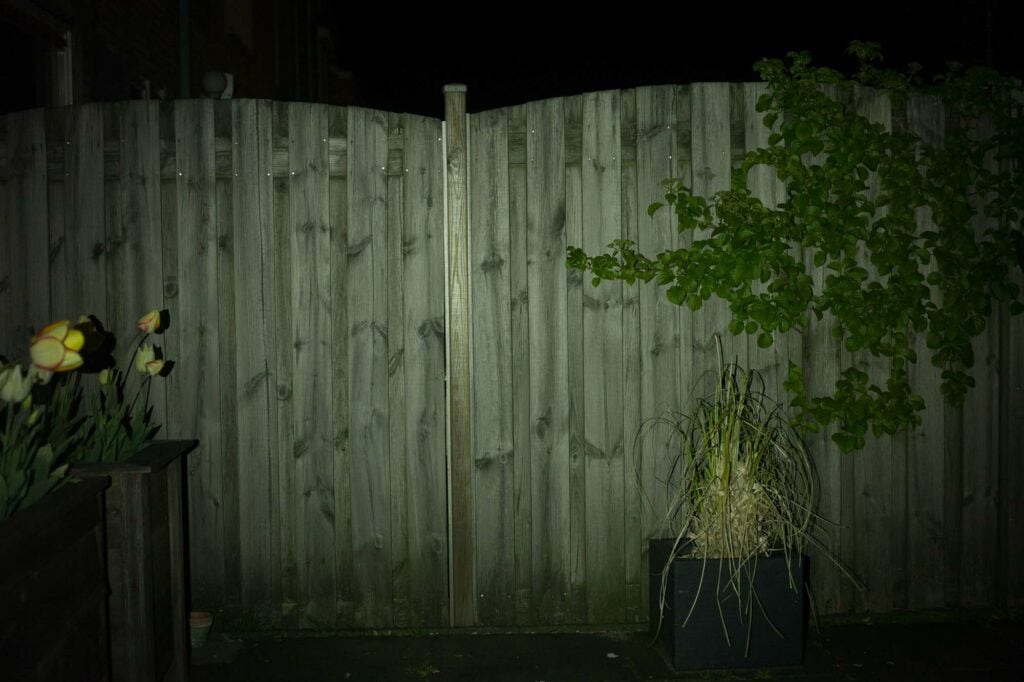
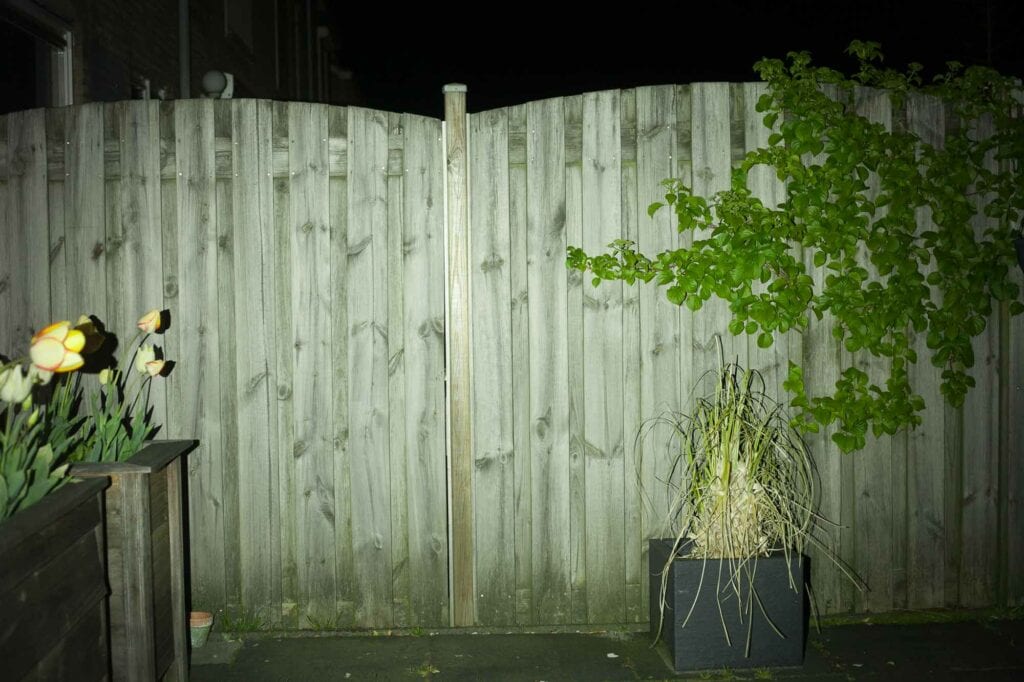
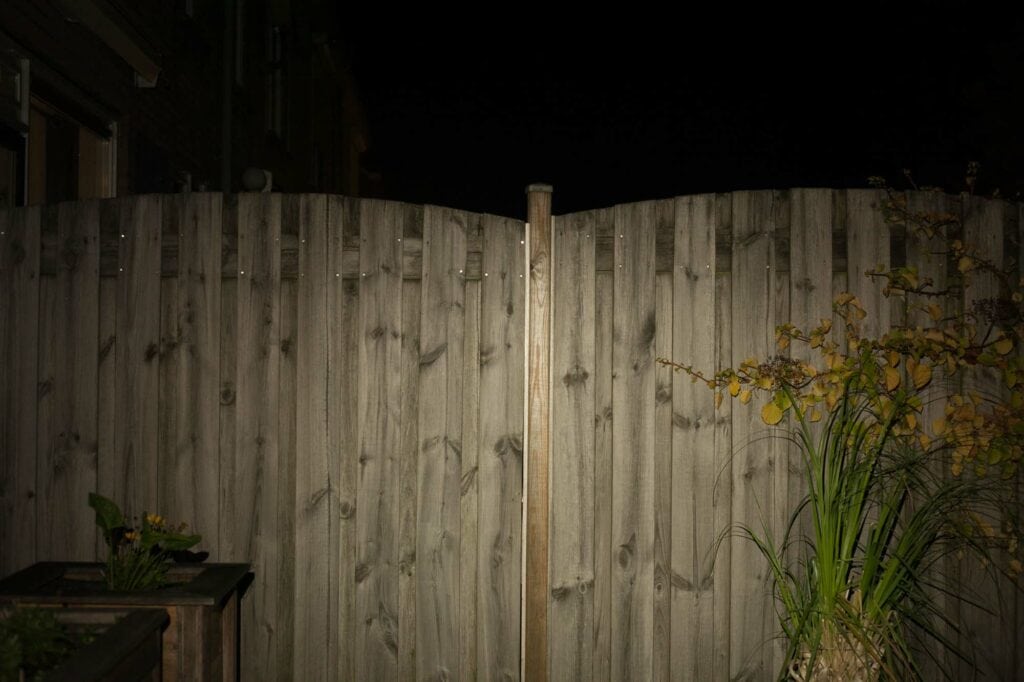
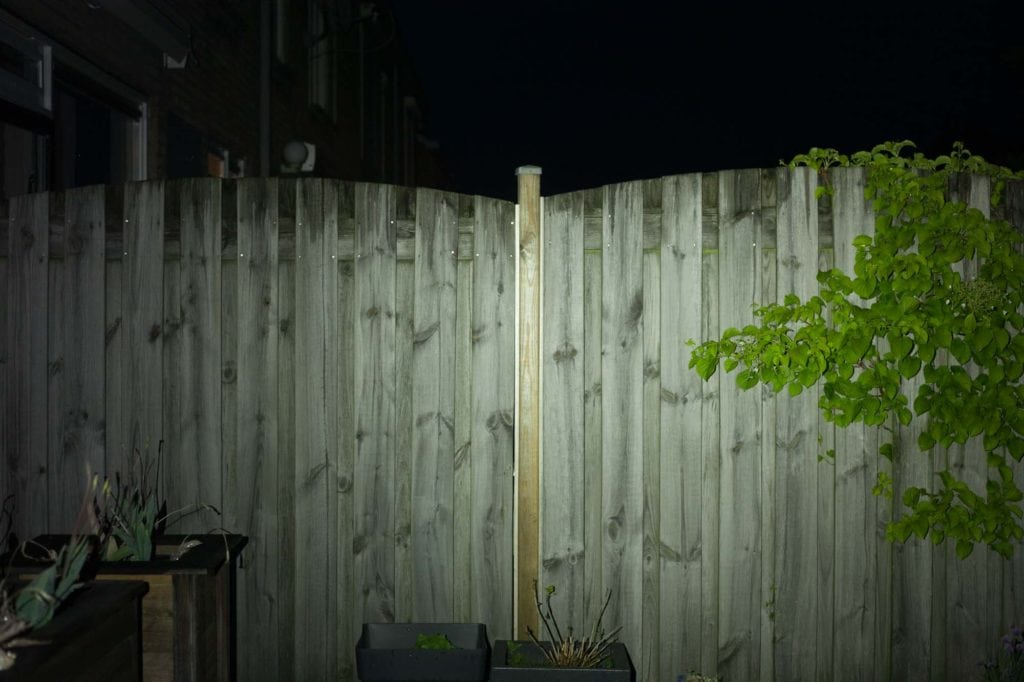
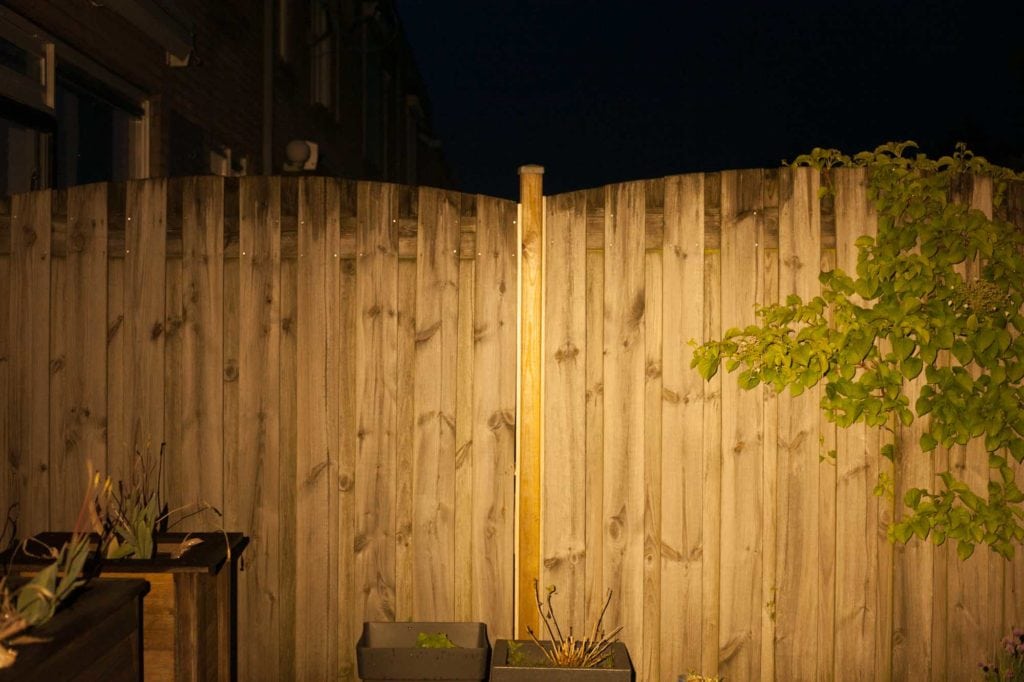
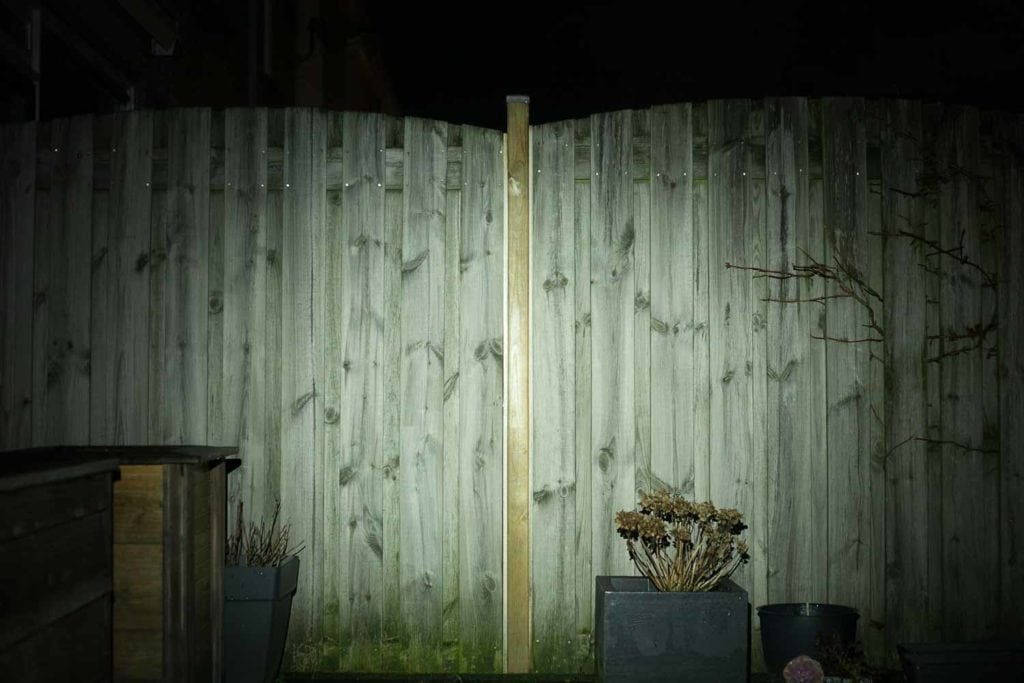
Disclaimer: This flashlight was sent to me for review at no cost by Acebeam. I have not been paid to review, nor have I been holding back on problems or defects.
Final Verdict
Pros
- Includes lithium-ion battery with USB-C port
- Plenty bright for this type of light, with lithium-ion battery
- Very nice, large, and evenly lit hotspot
- Works with all kinds of AA batteries (disposables and rechargeables)
- 800 lumens for small light like this is pretty good
Cons
- Low mode is too low on AA primaries and rechargeable AAs for everyday use.
- Mode memory can be a con for some
- For EDC use: a reverse-clicky switch might be a better option?
- Not reaching the claimed 1,000 lumen output
Explanation on star ratings:
1: Avoid: my phone flashlight would be a better choice – 2: Poor: significant defect or issues; almost unusable – 3: Average: some defects or issues; but still usable 4: Good: recommended (minor issues) – 5: Great: highly recommended

4.5 stars: ★★★★⋆
While our star rating provides a reliable indicator, we encourage you to read the full review to make an informed decision based on your own needs and preferences.
Multi-chemistry lights like the Pokelit AA are great. You can get maximum power with lithium-ion batteries, while still have the ability to use primaries in emergencies. Still, I recommend using NiMH batteries instead of alkalines.. in case you were wondering.
A simple UI, 3 modes, 14500, and AA support, make this a a pretty good EDC flashlight for flashoholics, as well as for the average Joe.
Acebeam Pokelit AA Gray discount code:
Get a whopping 15% off your next order at Acebeam.com with the following discount coupon: AE15. Simply add the coupon code at your checkout.
1lumen selects and reviews products personally. We may earn affiliate commissions through our links, which help support our testing.